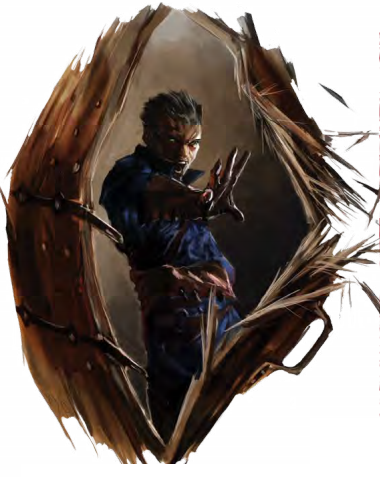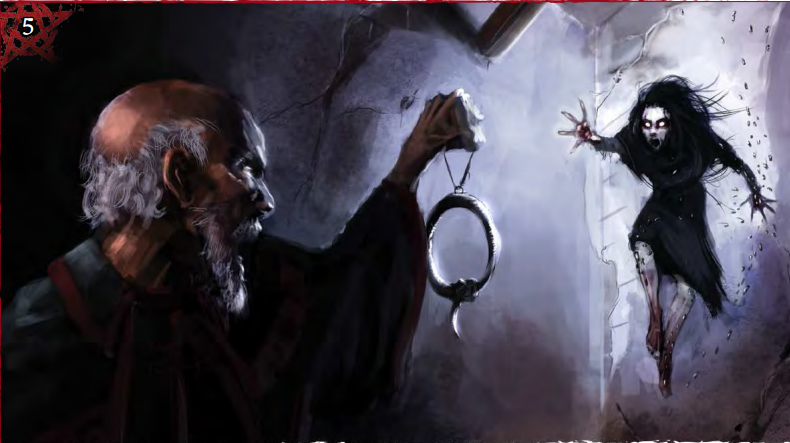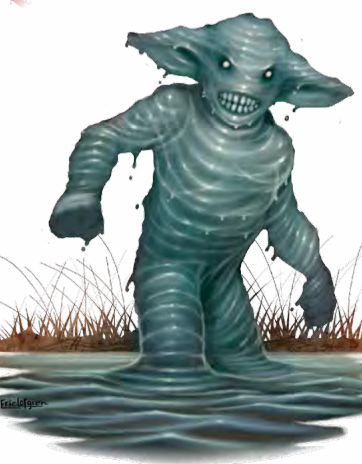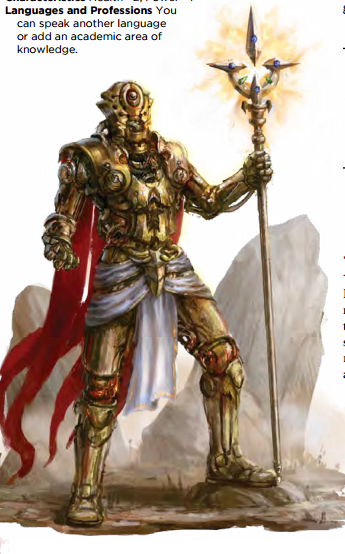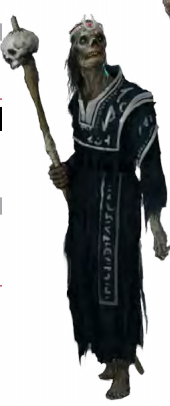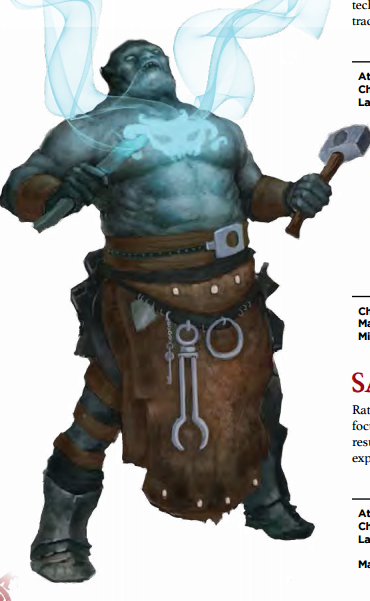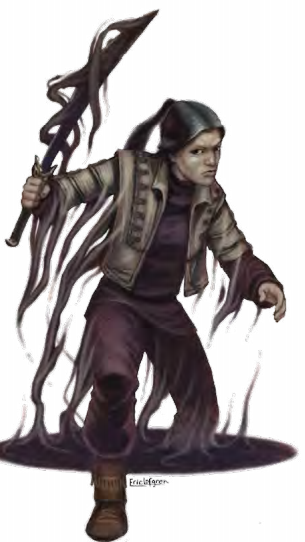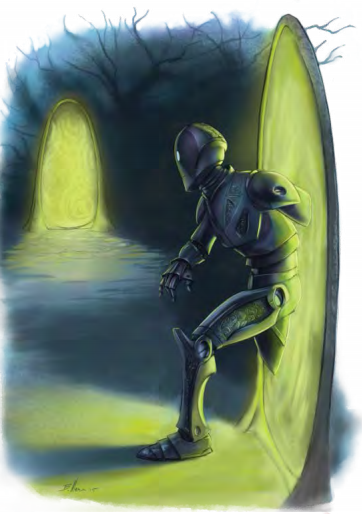Shadow of the Demon Lord by Serf & CHIMlord
Post
Original SA postI've been reading this game a ton over the past few weeks and I cannot get enough of it. I keep seeing people ask for a review/F&F so I figured that I'd give take a shot at explaining why I love...
Shadow of the Demon Lord
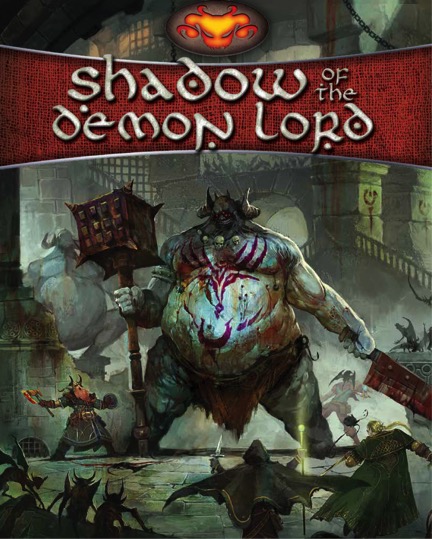
Shadow of the Demon Lord is a 2015 tabletop RPG by Robert Schwalb. Schwalb has worked on various editions of D&D, writing supplements for 3.5 and 4th, and then working as lead designer on 5th Edition. He’s since started his own company, and so far Shadow of the Demon Lord is his flagship product. SotDL is what I’d call a retroclone done right. The math is simple and straightforward, the character creation provides mounting variety, the game has lots of progressive mechanics built into it and the default setting provides a sense of tone that I would like to see in more games.
I’m not sure I could do a better job of summarizing the game than the description in the Introduction section, so I’ll just throw it up here.
quote:
The Demon Lord wears many masks. It is the One Foretold, the Destroyer of Worlds, the Hunger, the Shuddering One, the One Who Whispers, the Shadow in the Void, the Dark Between the Stars, and the Unspeakable One. Its will alone snuffs out the stars and its shadow ends realities.
Shadow of the Demon Lord is a roleplaying game set in a fantasy world’s last days. Reality frays as time and space unravel, weakening the laws governing what’s possible and what isn’t. As a result of this deterioration, threats from beyond the universe intrude, vile demons spawned in the endless Void, hungering for the utter destruction of all things. Where they tumble free into the mortal lands, they bring death and doom to all.
These are dark times foretold by the oracles and prophets, shouted by preachers on their pulpits, and whispered on the hot winds swirling out from the gates of Hell. All the unrest, suffering, doom, and decline spread from the Demon Lord’s shadow that creeps across the mortal world. It corrupts whatever it touches, twisting it to evil ends, fomenting madness, and quickening the doom this being demands. The resulting chaos has seen horrors long forgotten to rise up from their tombs to roam the lands as they once did. Armies muster over the most minor slights, bringing war, famine, plague, and death across the civilized lands
As bad as things are, all is not yet lost. Exceptional men and women have a chance to delay or possibly avert the looming disaster. They come from all backgrounds. They are hard-bitten mercenaries, power-hungry sorcerers, and priests of inscrutable gods. They are the people living in the bowels of the earth and the cities’ slums. They rise from the fighting pits, emerge from the academies, and venture from the farms and fields that sustain the great cities. These peoples, from all across the lands, come together in the world’s hour of need to be its champions, its defenders, and, perhaps, its saviors.
The game doesn’t have the typical “what is a roleplaying game” section like a lot of books do. Instead it provides two small descriptions of the Game Master and the Players, laying out what you’ll be doing in both roles.
Schwalb explicitly defines the game as being a conversation between the GM and the players, and reminds you that the rules are there for you to fall back on when you can’t decide what happens using common sense. He also lays out teamwork as a core part of the game. The stories that SotDL is used to tell revolve around why your player characters are together, and the idea of a strong group that sticks together is emphasized. The game clearly wants the players to work together, and encourages the players to have good reasons for why their characters will be sticking together.
The three core themes of the game are laid out in the Introduction section:
Moral Ambiguity
The End is Near
Danger Everywhere
These function, in my opinion, a lot like the Agendas from Dungeon World. They are the guiding principles of a game of Shadows of the Demon Lord, and when you’re unsure of how to proceed or what you can throw up as an obstacle for the players, these themes can be really helpful in coming up with things to use.
Shadows of the Demon Lord uses d20s and d6s, with the standard D&D xdy notation. Sometimes 1d3 will come up, and the game explains how to roll those.
After this introduction, there is a customary Example of Play section that gives a pretty good breakdown of how a few actions would go in the game. If I have one complaint about the book, it’s that there are no other Example of Play sections used throughout it to explain things with actual examples of the mechanics in action.
After the Introduction, there are a few more chapters, which I’m going to be covering in order:
Chapter 1: Character Creation
Chapter 2: Playing the Game
Chapter 3: Novice Paths
Chapter 4: Expert Paths
Chapter 5: Master Paths
Chapter 6: Equipment
Chapter 7: Magic
Chapter 8: A Land in Shadow
Chapter 9: Running the Game
Chapter 10: Bestiary
Chapter 1: Character Creation
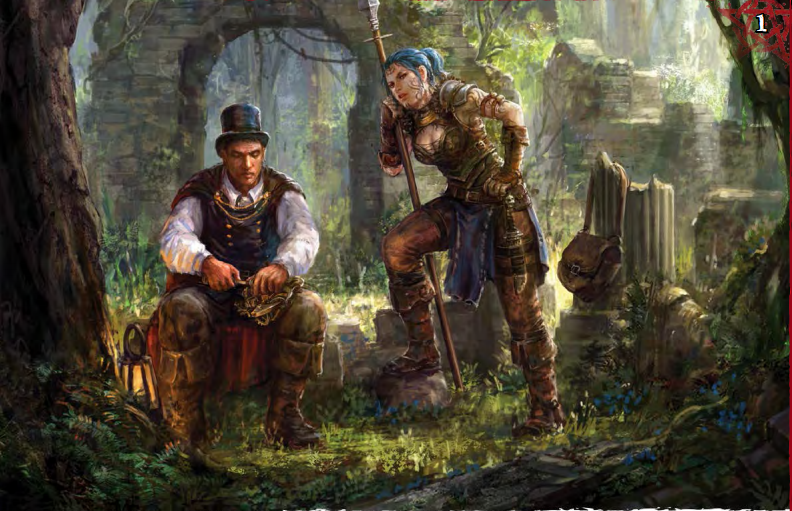
Shadow of the Demon Lord starts characters off at level 0. Aside from the stats and talents determined by your Ancestry (race/species in other games) and some minor differences in equipment all characters are pretty much the same at this level. SotDL is designed in such a way that these 0-level adventurers are thrown into a Starting adventure, and at the end they will be ready to form a party and also advance into a 1st-level Novice Path.
The core book has 6 Ancestries: Human, Changeling, Clockwork, Dwarf, Goblin, and Orc. Each Ancestry has some set stats and modifiers for those stats, and provides you with a selection of tables to roll on if you need help coming up with story aspects for your character. The book is careful to point out that rolling for these things is not mandatory, but can be helpful if you’re stuck or want some prompting to flesh out your character.
The game has 4 core Attributes: Strength, Agility, Intelligence and Will. Like a lot of retroclones, you have a score and a modifier in these attributes. You modifier is always equal to your score minus 10. So if you have a 13 Intelligence, your modifier is +3.
At character creation you can increase one score by 1 while decreasing another score by 1. As you level up, you get more score increases of your choice.
You then have 10 Characteristics:
Defense (your AC. Monsters have to match or exceed this to hit you)
Health (your HP)
Healing rate (the amount of HP you can heal after 8 hours of rest, used for lots of healing spells)
Perception (how aware and observant you are)
Size (how big you are. Humans are usually 1, with dwarves being ½)
Speed (how fast you can move, measured in yards)
Power (your magical ability. You only get this with magical Paths)
Damage (how much HP you’re missing)
Insanity (how crazy you are)
Corruption (how much of a bad guy you’ve been)
Each entry also gives you a few languages and professions as well as some talents. At level 4, you get a new talent from your Ancestry.
I’m gonna go through the Ancestries in the order the book presents them:
Human
You know humans, they’re not all that different in Shadow of the Demon Lord. They come in all shapes and sizes, skin colors and creeds. The book stresses the breadth of human diversity and reminds you that humans can be anything and just about any concept you can think of will fit somewhere in the setting.
Humans have totally average stats, 10s in everything, and you can increase one stat of your choice by 1.
Being the baseline Ancestry, I’ll post the block of Characteristics for Humans and then just note where other Ancestries deviate from this standard.
Perception equals Intellect
Defense equals Agility
Health equals Strength
Healing rate equals one-quarter of your Health, round down.
Size is 1 or ½
Speed is 10
Power is 0
Insanity is 0
Corruption is 0
Humans get the Common Tongue by default, and can either add another language or a profession.
Level 4 Humans get +5 Health and either learn a spell or get the talent Determined, which allows you to reroll a 1 that you get on a Boon die roll (more on Boons in chapter 2)
The tables you get for a Human are Background, Personality, Religion, Age, Build and Appearance. You do not have to roll on any of these, and can pick a thing or create your own if you like. There are a few interesting options on the Background table such as “you died and returned to life. You start the game with 1d6 Insanity”, “the faerie held you prisoner for 1d20 years” and “you foiled a plot to kill someone important or you brought a killer to justice”. There is a decent spread of these options, some of which have mechanical effects and others of which are just for flavor or plot hooks.
Appearance is interesting. Intelligence and Will both have facets of the traditional Charisma score, allowing you to pick how your character looks without it having an explicit mechanical backing, which is something I like.
Changeling
These are living beings who are actually faerie constructs. Made from sticks and dirt or other natural materials they are created to replace the children that the fae steal. Most of the time the magic animating them fades away and they become inert, but sometimes it doesn’t and a changeling is created. Changelings are capable of changing their appearance to match anyone they can see, but doing so can have negative effects on them as they struggle to match that person’s personality and habits, for fear of being found out.
In their natural form, changelings look like humanoid shapes formed from rocks, sticks and dirt with a pair of glowing green eyes.
Changelings are mostly like Humans, but have 9 Strength, but add +1 to their Perception. They speak the Common Tongue, and are immune to disease and being charmed. They also have Shadowsight, which lets them see in shadowed areas, and Steal Identity, which lets them take the appearance of any flesh-and-blood being they can see that is Size 1 or ½.
They also have Iron Vulnerability, which causes them to become Impaired when in contact with iron. If they become incapacitated (0 HP), or touch an item made of iron they immediately revert to their natural forms.
At level 4, Changelings either learn a spell or they gain Doppleganger’s Advantage, which allows them to use a triggered action to use Steal Identity, and while wearing someone’s appearance they get 1 boon on attack rolls made against the person who’s appearance you stole.
For determining your Changeling’s physical characteristics, you first decide on the apparent Ancestry and then head to that section to see those tables. But the Changeling Backgrounds have another couple of gems like “you have no idea you’re a Changeling. You think you are a member of the Ancestry you adopted. Add an extra profession and until you are incapacitated or touch iron for the first time you cannot use Steal Identity” or “the first time you stole someone’s identity you also stole a few of that person’s memories.”
Next time, I'll covering the next 2 Ancestries: Clockwork and Dwarf!
More Ancestries
Original SA post Shadow of the Demon Lord Part 2: More AncestriesThis time we're covering the Clockwork and the Dwarf.
Clockwork
Mechanical people, the Clockworks are described as being “made from metal plating, gears, wires, bits of spring, and cogs”. However, they are not of a scientific origin, instead being constructs to which souls ripped from the Underworld have been bound. Thus allowing you all the redundant cogs and gears that you want because it’s magic, you ain’t gotta explain shit. Clockworks are sentient beings and the magic that tethers their soul also allows them to manipulate their mechanical bodies - but only so long as their key is turned.
Clockworks all have a key located somewhere on their bodies that they cannot reach, and the key must be turned in order for them to function. Clockworks retain minimal memories of their past lives, and those who have more memories are often more traumatized by their new form and require more time to adjust.
Clockworks have the most unique character creation process of the core Ancestries. Their Strength is 8, Agility 8, Intellect 9 and Will 9. They begin with an innate Defense of 13 and a Speed of 8. For talents they are immune to disease, poison, sleep and fatigue, they have a Mechanical Body which means they do not need to eat, breathe, drink or sleep, but cannot swim and will sink to the bottom of any body of water.
They have a Key, which is assumed to always be cranked unless a couple of things happen. If a Clockwork is incapacitated, their key stops turning, and if they make an attack or challenge roll and the result is a 0 or lower, their key stops turning at the end of the round. When a Clockwork’s key is not turned, they become an object instead of a creature. Anybody who can reach your key can use an action to turn it, which causes you to become a creature again. If you were incapacitated, you roll a d6, on a 4+ you heal 1 damage and become a creature at the end of the round. On a 3- nothing happens.
At level 4, Clockworks get +5 Health and either learn a spell or get Grind the Gears, which allows them to take another action on their turn. When they do, they roll a d6. If the result is an odd number, their key stops turning and they become an object.
Clockworks have a more involved step after this, where rolling or picking from the following tables determines a lot about your Clockwork mechanically.
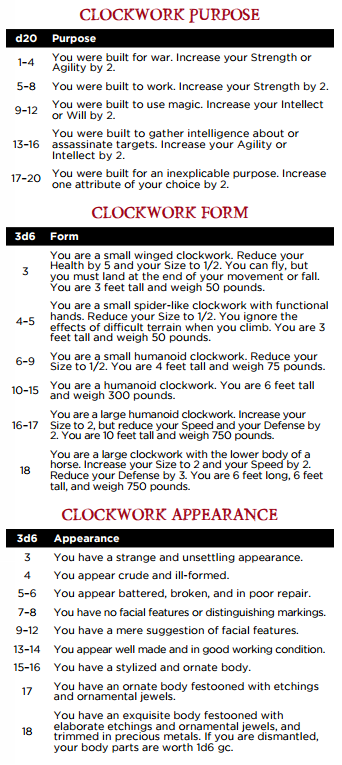
Finally we have the Clockwork Backgrounds, some of my favorites include “goblins captured you and almost took you apart for scrap materials. You have replaced your missing components with bits of wood, old weapons and other rubbish”, “you fell off a boat and spent 2 years walking to shore” and “you were one of 1d6 other Clockworks made at the same time. You hope to find them one day.” Also, in the Personality section, there’s a cute nod to Asmiov with “your maker gave you three commandments and you must obey them”.
Dwarf
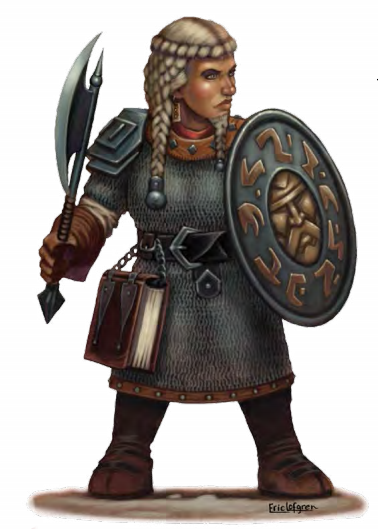
Dwarves! These folks are always my favorite in any game, and Shadow of the Demon Lord is no exception. Here Dwarves are Tolkien on steroids. They live in cities under the mountains and toil away digging up gold, silver and gemstones, and they’re paranoid about people taking their stuff so they don’t make friends easily. They all have beards, moustaches or big muttonchops regardless of gender, and they’re short but dense people. They can put off outsiders, and their ancestor worship and belief in being constantly observed means they can seem very dour as they do not want to dishonor their clan.
Dwarves get a 10 in every Attribute except Agility, where they have a 9. They get a +1 to Perception and a +4 to Health and their Size is ½ and Speed is 8. They can speak the Common Tongue and read, write and speak Dwarfish. They have Darksight, which lets them see in darkness perfectly within Medium range, and treat anything beyond that as lit. They get a Hated Creature which gives them 1 boon while attacking creatures of that type, and they have a Robust Constitution that lets them take half damage from poison and gives them 1 boon to challenge rolls to avoid or remove poison.
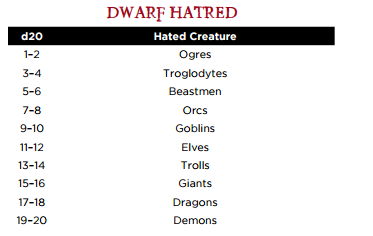
At level 4, Dwarves get +6 Health and either learn a spell or Shake it Off, which allows you to use an action to heal equal to your Healing rate and remove one of a few afflictions. This talent can only be used once until you complete a rest, which essentially makes it a Daily power. One of the complaints I have about SotDL is that it doesn’t borrow enough from D&D 4th Edition, and when it does, it borrows them in clumsy ways. The wording of the “once until you rest” talents is clunky and could’ve been executed with more grace.
Dwarves get a couple of interesting Backgrounds. I’m partial to “you sold your soul to a devil to gain wealth. The devil betrayed you and left you penniless. You start the game with 1 Corruption”, “the creatures you hate overran your home and wiped out your clan” and “you inherited a battleaxe or warhammer from an ancestor”. That last one sounds kinda lame, but real weapons are hard to come by as a level-0 character, and getting one for free is pretty sweet, even before you have a Novice Path.
Next time: the last 2 Ancestries, the Goblin and the Orc!
Goblins, Orcs, and some character creation!
Original SA post Shadow of the Demon Lord Part 3: Goblins, Orcs, and some character creation!Goblin
Probably my second-favorite species in most settings, in SotDL Goblins are faeries who were cast out a long time ago by the Faerie Queen, but no one but her remembers why anymore. Goblins have since moved in with the Human societies and live in trash heaps and sewers and other places no one else wants to live, doing jobs no one else wants to do. Goblins have even more varied appearances than Humans, with features like horns, pig snouts, and fangs being common but no two Goblins look the same. Goblins also have weird habits, since they used to live with the faeries, and can seem capricious and odd to other people.
The book doesn’t refer to Goblins as monsters, and instead they seem to be accepted members of society. So long as they have something to do, which most often appears to be digging through garbage, they seem to make for perfectly fine neighbors.
Goblins get an 8 in Strength, a 12 in Agility, an Intellect of 10 and a Will of 9. They get a +1 to Perception and have their Size set to ½. The speak the Common Tongue and Elvish, they are immune to disease and being charmed, but have Iron Vulnerability, which causes them to be impaired while touching iron. They get Shadowsight and talent called Sneaky, which allows them to roll with 1 boon on Agility challenge rolls to be stealthy.
At level 4, Goblins get +4 Health, and either learn a spell or gain Spring Away, which lets you use a triggered attack to retreat when an enemy you can see fails to hit you. The game defines a “retreat” as the character moving half their speed, which doesn’t provoke any free attacks.
Goblins get two interesting tables, one for the Distinctive Appearance and another for their Odd Habit. The Appearance table has a few gems like “you have the head of a dog”, “you have a tooth growing out of your forehead”, “you have all the warts” and “you have 1d6 extra fingers, placed on your body wherever you wish”.
The Odd Habit table warrants being posted in its entirety.
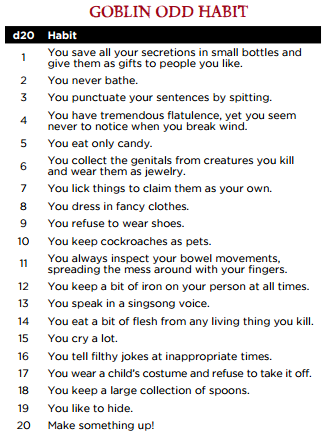
These range from the downright fishmalkian (looking at you number 7) to cute and then to disturbing.
The Backgrounds do not disappoint, and actually have some very good story hooks in there. My favorites are “you spend the last 1d6 years in a drunken stupor. You are not proud”, “you spent 2 years believing you were a fearsome dog. You start the game with 1 Insanity”, “you stole a knife from a dashing knight” and “you snuck into Alfheim and stole a lock of hair from the Faerie Queen.”
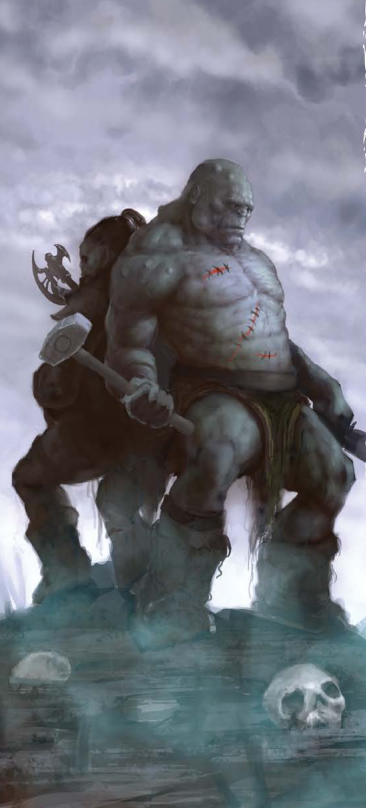
Orc
Orcs are another favorite of mine. In Shadow of the Demon Lord’s default setting the Orcs were once the jotun, a warrior species from the icy southern parts of the world who fought against the Emperor. Captured jotun were brought north and dark magic was used to twist them into the Orcs, who became the backbone of the Imperial military, conquering nations and quelling rebellions for centuries.
The assumption of the default setting is that the orcs have rebelled against the Empire, slain the Emperor and now they run things in the capitol while the rest of the Empire falls apart. Orcs have a variety of skin colors, with blotchy, mottled flesh, and start at 6 feet, 200 pounds, going all the way up to 8 feet 600 pounds.
The default setting of SotDL picks up right after an orcish leader, Drudge, kills the Emperor and seizes the throne for himself. As an aside, the “Shadow of the Demon Lord” is a real thing in-universe. It is a corruption of the world or the people that sows chaos and opens the cracks in reality wider, allowing the demons to enter the world in greater numbers. The Shadow can manifest in lots of ways, but the default assumption is that the “Fall of Civilization” is occuring, a sort of fall-of-Rome thing, where Drudge has been affected by the shadow, and killing the Emperor is a move meant to destroy the civilized world and allow the Demon Lord to take more control. There are other manifestations of the Shadow that are presented later in the book, some of which I like more than this one.
Orcs are about what you’d expect stat-wise. They get an 11 in Strength and a 9 in both Intellect and Will. They get a +1 to Perception, speak both Common and Dark Speech and have Shadowsight.
At level 4, an orc gets +6 to Health and either learns one spell of gains Rising Fury, which allows them to, upon taking damage, make their next attack roll with 1 boon.
Orcs then get some interesting Background options. Ones that stand out to me are “you stayed loyal to the Empire and fought against other orcs. You were branded as a traitor and cast out”, “you were made a eunuch and stood guard over the emperor’s concubines”, and “the Gods of Blood and Iron visit you in your dreams. You start the game with 1 Insanity”.
Professions
This is the skill system for SotDL. The way Professions work is that they guide your actions, what your character knows and how they would behave. A person with the Soldier profession and another with the Woodcutter profession will probably approach situations in different ways. Professions can allow you to automatically succeed at things that would fall into your Profession, or grant you boons to your roll, depending on what the GM says.
You get 2 Professions at character creation, and you can trade 1 of those to become literate in one language you know how to speak
Like everything else in Shadow of the Demon Lord, you can roll randomly for your Professions. First on a 1d6 table for a broad category, then again on a d20 table for a specialized choice. The broad categories are Academic, Common, Criminal, Martial, Religious and Wilderness. Academic provides the bonus of making you literate in one of the languages you can speak by default.
Equipment
Your starting gear is determined by your Wealth, which you roll on a table using 3d6. The categories are Destitute, Poor, Getting By, Comfortable, Wealthy and Rich. Each level of Wealth provides a different assortment of gear for a Starting character.
In addition, you also get an Interesting Thing. This Thing can be an object, a person, or even a feeling or connection. A few interesting ones are “a curious odor, a pungent stench, or a skin condition that never quite heals”, “unrequited love”, “a newborn baby that might or might not be yours”, “a tiny, inert, mechanical owl”, “the true name of a very minor devil” and “three small white mice that whisper strange things to you as you sleep”
Making a Character
So, in keeping with Shadow of the Demon Lord’s desire to provide you with a quick and easy way to roll up a character, I’m gonna make one right now!
Since they’re the most interesting of the Ancestries, I’m gonna pick Clockwork. I’ll adjust the stats how I see fit, and roll for everything that I can.
Okay, so I rolled 3d6 on the Age table and got an 8 which means this Clockwork is “new, 5 years or younger”. On the Clockwork Purpose table I rolled another 8 on a d20 and got “You were built to work. Increase your Strength by 2”. On the Clockwork Form table I got a 12 on 3d6 which means “You are a humanoid Clockwork. You are 6 feet tall and weigh 300 pounds”. I then rolled a 14 on 3d6 on the Clockwork Appearance table and got “You appear well made and in good working condition”. On the Clockwork Background table I rolled an 18 on a d20 and got “You found a cryptic message inside your body. You have not deciphered its meaning” and then on the Clockwork Personality table I rolled 3d6 and got an 8, giving me “You didn’t ask for this existence, but you make the most of it while you have it.”
For my Professions, I rolled a 1 both times on a 1d6, and then a 5 and an 18, which means that Spradley has experience in Folklore and Religion.
Finally, I rolled for Wealth on a 3d6 and got 12 which means “Getting By”. I rolled for my Interesting Thing, which is a “fist-sized blue-spotted egg” and Personality, which was a 4 and a 9, meaning that our Clockwork is Dependable but also Obnoxious.
Our Clockwork, who I’ve taken to calling Spradley Sprocket, is 5 years old. They are humanoid in shape, weighing 300 pounds with powerful lifting arms and legs. They appear to be in good condition, which is easy given their age. Spradley was built to move heavy things around, specifically, they were sold early in their life to a traveling scholar, who needed an assistant to carry around her gear. Following this scholar, Spradley learned a lot about her field, which was the study of the Old Faith and witchcraft. Progressing from simple packmule, Spradley became a research assistant and traveling companion. They aren’t very good with people, but the scholar covered for them and came to understand Spradley.
One for introspection, Spradley began to wonder about their own existence. After all, they had been a soul plucked from the Underworld and bound to this metal body. Who had they been before? They didn’t ask to be brought back, but at the same time the certainty of life as a Clockwork was better than the unknown of reincarnation. So Spradley began tinkering with their own body. In the process, Spradley discovered a hidden recess inside their arm, containing a message, written in a language Spradley doesn’t know. When Spradley asked the scholar to read it for them, she claimed she couldn’t understand it, but even as bad as they are with people, Spradley knew she was lying.
The unknown ate away at Spradley, and so one night, under the cover of darkness Spradley ran away, stealing money and supplies from the scholar. They traveled west, seeking the free cities where they could maybe find someone who could read the message, or better yet, their own creator. After all, who could have left the message if not him?
Spradley Sprocket
Strength 11, Agility 8, Intellect 10, Will 8
Perception 9
Defense 13
Health 11
Healing Rate 3
Size 1, Speed 8, Power 0
Damage 0, Insanity 0, Corruption 0
Languages: Common (Literate)
Professions: Folklore, Religion
Immune to disease, poison, asleep and fatigued
Key
Mechanical Body
Repairing Damage
Gear: Staff, basic clothing, backpack, 1 week of rations, waterskin, tinderbox, 2 torches and a pouch with 2 copper pennies.
Audience Participation
Let’s make a character together! Let me know what Ancestry you would like to see rolled up. The one with the most votes wins. I’ll take this character and level them up alongside Spradley to give you an idea of how the character advancement system works.
The options are:
Human
Changeling
Dwarf
Goblin
Orc
Next time: finishing up character creation and moving on to how the game is played!
Finishing up character creation and some rules
Original SA post Shadow of the Demon Lord Part 4: Finishing up character creation and some rulesThe chapter on Character Creation ends with a few things to put the finishing touches on your character. There are some suggested questions to ask yourself about you character. These include things like what they value, what they fear and hate, what secrets they may have and how they see the world.
Then the book moves on to talk about the first adventure. As mentioned, in SotDL, you start out as level-0 characters who go on a Starting adventure, after which you level up and pick one of four Novice Paths. Players are encouraged to use the Starting adventure to learn the rules of the game, and to keep track of what their character did and what they enjoyed doing. Was your character the one to take up a weapon or did you like engaging in combat? Consider the Warrior or the Priest. Did you like casting spells from scrolls? Magician could work for you. Stuff like that is pretty helpful I think, since you get an adventure just to nail down what you like doing. And due to how character advancement works in SotDL, you’re not locked into that choice forever even then.
One cool thing is that in a few Starting adventures I’ve read, there are Path Points. These are a hidden thing that tracks when players do certain things. If they sneak around and eavesdrop on people, they get a Rogue Path Point. If they pray to the gods or ask about the local temple, they get a Priest Path Point. When the adventure is over, you reveal the Path Points to the players, which helps them decide on how to proceed.
After this, they talk about Building a Group. It gives four goals for players to follow during the Starting adventure to ensure that they come out as a cohesive group ready to have more adventures.
Cooperation
Simply put: work together and you’ll succeed. You’re encouraged to help each other out and look for ways to build stronger connections between the characters.
Avoid Conflict
Shit is scary at level 0. You’re not very good at fighting, and the enemies will rip you apart in short order. You want your character to survive, so you should look for creative ways around fighting and definitely not start anything with the other characters.
Find Gear
You don’t get much to start out with, and the book encourages players to make deals for gear, loot corpses, and poke around to find things to shore up their weaknesses.
Achieve Your Objective
Finish the adventure! This is a reminder to pursue the goal of the adventure and not let yourselves get distracted or sidetracked. This is to both get you to level 1 faster and prepare you to work towards completing future adventures and pursuing your goals.
And the chapter closes with the level advancement chart, which I think is cool. Shadow of the Demon Lord is full of a lot of modern design that I love, and one of the best things it has done is completely obliterating dead levels.
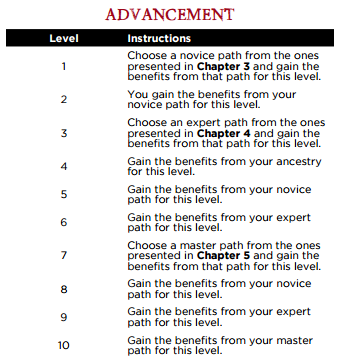
We haven’t been over the Paths yet, but suffice to say that you get something cool at each level for all of them. Even level 4, which is just your Ancestry, gets you some Health, and either a spell or a new talent.
Another cool thing is that the game has no XP. You level up after significant story moments, typically once at the end of each adventure. You also level up as a group, so no mixed-level parties. All in all I love the advancement system in SotDL, as you always get something interesting and you advance at the same time, meaning no one is ever left out when they level up.
Chapter 2: Playing the Game
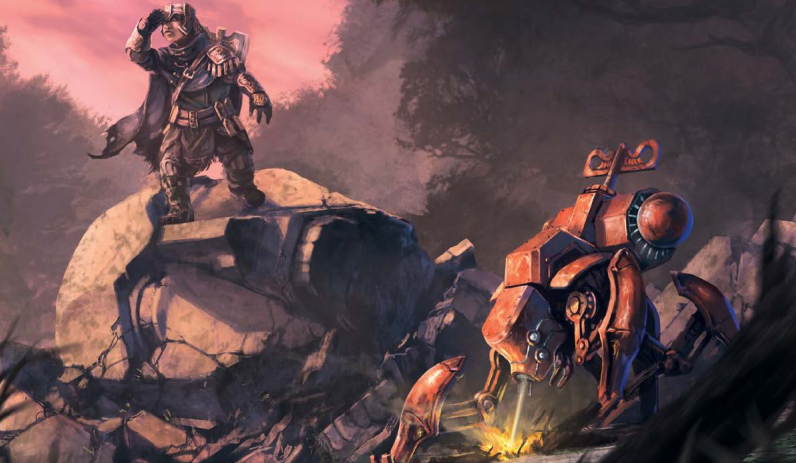
This chapter starts off sensibly by telling the players and the GM that some things just happen. You don’t roll to walk down the street or to drink beer. Those things are assumed to succeed and there’s no need to roll for superfluous things. The dice only come into play when there is a reasonable challenge presented.
Time is also discussed as something that the GM and players don’t have to track meticulously during most parts of the game. A voyage could be just a short description of a few days passing, but a negotiation probably needs to be played out in real time. When combat happens, the game busts out rounds, which we’ll get into later in the Combat section, but I don’t think you’ll be very surprised by any of that.
Rolling the Dice
As mentioned before, SotDL uses d20s and d6sm with the occasional d3 notation for certain things. There are 2 types of rolls in the game: attack and challenge.
Attack rolls are, of course, rolls to attack an enemy. They are called for when attacking with weapon, or casting a spell that has to effect the target. Melee attack rolls use your Strength modifier, and ranged attacks use Agility. Spell attacks will usually use either Intellect or Will, and target one of those attributes on the enemy.
If you’ve played D&D or a retroclone before, you know how these work:
1d20 + modifier + other modifiers
Importantly, when you deal damage, you do not apply your modifier to it.
Challenge rolls are pretty much everything else. When the outcome of an action is uncertain because of extenuating circumstances and you’re not directly opposed by another creature, you make a challenge roll. This is for picking locks, eavesdropping on people, and for avoiding damaging stuff. The GM decides which attribute applies to the current situation. The target number for challenge rolls is always 10. Yep, no more DCs and fiddling with how hard things should be. You just want to roll over a 10. There’s also no critical successes, except with certain talents/spells.
The formula is identical to attack rolls:
1d20 + modifier + other modifiers
Get a 10 or above and you succeed. Get lower than that and you fail. Later on in the GM section Schwalb presents a somewhat interesting fail-forward system, but if I was running the game I’d go with my gut.
The book talks briefly about modifiers, but they are mercifully rare in Shadow of the Demon Lord. Mostly you just have the modifier from your Attribute and maybe rarely some static bonuses. Like most retroclones, these modifers are cumulative and have to be added all together.
But now we have the real interesting modifiers in boons and banes. Boons are things you get when you have and advantage to make a roll, and banes are for when the chips are down. When you roll with boons, you roll 1d6 for each boon. Then you take the highest of those numbers and add it to your d20 roll. So if you have 3 boons and you roll a 1, 2, and 5, you only add the 5. Banes work in the same way: roll your d6s and subtract the highest number.
If you have both boons and banes to a roll, they cancel each other out 1-to-1, so if you have 2 boons and 3 banes you just roll with 1 bane.
I really love the boons and banes system because, combined with the low and extremely limited modifiers, you get math that doesn’t have much opportunity for being broken. Boons aren’t set in stone, so you could get anything from a +1 to a +6 on your roll, and banes work the same in reverse. There are talents and spells that interact with boons and banes in awesome ways and I can’t wait to get to them.
Attributes
Next up is an overview of the four Attributes and their derived Characteristics. One good thing about this is that each Attribute only corresponds to one Characteristic, there’s no math aside from the occasional +1 conferred by an Ancestry or a Path.
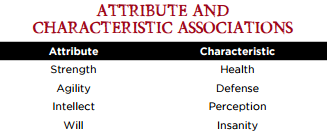
Strength is easy. This is a combination of the Strength and Constitution scores from D&D and most retroclones. It tells you how much Health you have, it is added to your melee attack rolls, and you use it to push, pick up, and pull stuff. As is required for all RPGs of a certain level of crunch, SotDL has included this handy chart:
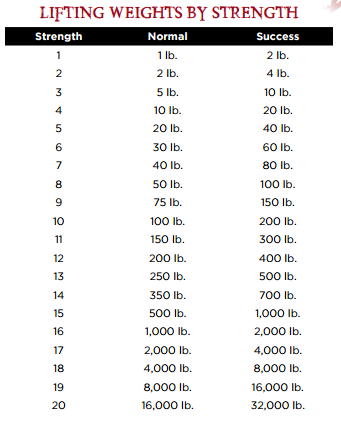
The number under the “Normal” column is what you can lift with no problem and the number under the “Success” column is the maximum you can lift with a Strength challenge roll.
Agility is basically just Dexterity. It is the baseline for how hard you are to hit, and it applies to ranged attack rolls. You use this for quick movement, jumping and rolling around, and slipping out of tight places.
Intellect measures how good your brainmeats are. It confers your Perception score, is applied to lots of rolls to hit with spells, and you use it for challenge rolls that deal with puzzles, recalling information, and for resisting mental effects like illusions.
Will is essentially Wisdom and Charisma rolled into one. It lets you know how much Insanity you can have before you snap, and you use it to resist getting Insanity in the first place. Some spells use Will for their attack rolls, and challenge rolls with Will are used to determine willpower and determination in achieving a goal.
Characteristics
These are derived from your Attributes, as seen above. They’re pretty simple, but each one has a few quirks that you might not be used to.
Health is basically your HP. But unlike HP you do not reduce it when you take damage. Instead, you increase your Damage score. If your Damage ever equals your Health… we’ll get to that in the combat section. When your Damage is equal to half your health you are Injured, which has no effect here, but some talents and spells consider it.
The reason Health is counted separately from Damage is because you can get penalties and bonuses to it. For example, the Berserker Expert Path gives you a +10 to Health as part of their Rage talent. Bonuses and penalties to your Health makes you easier or harder to kill, and reminds me of a more flexible version of temporary hit points. If your Health ever reaches 0, you die.
Healing Rate is how fast you can heal after an 8-hour rest. For most characters, this is your Health divided by four. Healing spells will cause you to recover HP equal to your Healing Rate or multiples of that value.
Defense is your AC. It might be increased by certain Paths, but mostly you get higher values through armor. Without armor, your Defense equals your Agility. The maximum Defense anything can have is 25.
Perception measures how well you see and hear etc. It is all of your senses rolled into one. It usually equals your Intellect, and most often comes up in challenge rolls, but some talents and spells target it or allow you to target it in your enemies.
Insanity is where we get into the fun stuff. This is a measure of how crazy you are at any given time. Building up Insanity is obviously bad, but nothing happens until you gain more. You begin the game with 0 Insanity usually and you can never have more than your Will score. You gain Insanity when you see bad shit going down. Some monsters cause you to gain it, other times you’ll get it from seeing something horrific or discovering That Which Man Was Not Meant to Know. When this happens, you make a Will challenge roll to resist, and on a failure, you get a little crazier!
When you gain a point of Insanity, you become frightened for a number of rounds equal to your new Insanity total. Frightened means you take 1 bane to all attack and challenge rolls, and you cannot take fast turns in combat (more on this later). If you were already frightened, you instead become stunned, which is pretty self-explanatory.
Now, if you gain enough Insanity to equal your Will score, you go mad. This isn’t the end! In fact it’s not even close because Shadow of the Demon Lord is pretty lenient for a retroclone. Going mad means you roll a d20 on the Madness table and take the result you get. These can vary from “Death” on a 1, to “Sickened” which causes you to puke and shit yourself for a while, to “Rage” which gives you a boon to attack rolls and makes you do more damage to “Revelation” on a 20 which reduces you Insanity and gives you a permanent boon to all Will challenge rolls to resist gaining Insanity.
When you go mad, you reduce your Insanity score by 1d6 + your Will modifier.
Don’t want to go mad? Take a Quirk! This allows you to reduce your Insanity score by 1d6 + your Will modifier in exchange for getting a little weirder. This includes things like phobias, manias, and paranoia and such. You can only get 1 Quirk per rest, and the GM gets to choose it.
Corruption is also interesting. This is a measure of how bad of a dude you are. When you do a stereotypically evil thing like murder, give an innocent a disease, use forbidden magic etc you gain a point of Corruption. When this happens you roll a d20. If the number is under your new Corruption score you roll again on the Mark of Darkness table and get yourself a shiny new weird thing.
Options include:
“You never cast a reflection in mirrors”
“A weeping red eye appears in the palm of each of your hands”
“Your eyes become pools of darkness; in the dark they glow with an evil red light”
“You grow a second row of teeth in your mouth and a new row of teeth in an unexpected place”
“Once each week, a child within 1 mile of you sickens and dies”
There are four levels of Corruption that have escalating bad effects
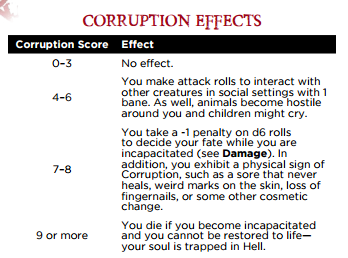
Getting rid of Corruption ain’t easy. There’s no specified mechanical way of doing it. There is magic that can cleanse low levels of Corruption, but those spells aren’t listed in the book and are explicitly rare and exotic. The best way is to be a better person. By working to help others selflessly, you can shed some or all of your Corruption.
There’s technically no further penalties for having a high Corruption score aside from the fact that you’ll look fucked up and have some banes to social interaction. Non-mechanically, when you die, your soul will be sent to Hell, where devils will torture it for years to extract that sweet, sweet Corruption that they need to live.
Power is a measure of your magical ability. It is gained by following certain Paths, and determines thing like how many castings of spells you have per day and the effects of some Paths’ talents. You aren’t told this here, but following a pure spellcasting series of Paths the highest Power you can naturally attain is 5, and the highest level of spells in the game right now is 5.
Size is, as mentioned, how big you are. 1 is for human-sized people/things. ½ is half that, so these are your dwarves and goblins. 2 is twice as big as a human. It goes on like that for a while. The biggest creature I’ve seen is the roc, which is Size 25. From your Size you know how much space you take up and your reach. Bigger creatures have longer reach, like you might suspect.
And then there’s Speed, which isn’t linked to Agility but is instead its own stat. This is how far you can more, in yards, in a round. Most things have Speed 10, but there are faster and slower things out there. The game then gives a crunchy breakdown of how far you can move in certain time increments at that speed. This is the kinda stuff that I find rarely comes up in games, but is handy to have around when it does.
It looks like Goblin has won the voting, so I'll be rolling up a gobbo friend for us all and posting them in the next update!
Next time: Taking damage, dying, and social conflict!
Damage, Dying, Getting Fucked Up and More!
Original SA post Shadow of the Demon Lord Part 5: Damage, Dying, Getting Fucked Up and More!We start off talking about Damage. Damage is a number that slowly goes up, and if it ever equals your Health, you fall over like a sack of potatoes. Damage can have different sources. These sources aren’t explicitly codified anywhere, but like a lot of retroclones you are asked to just use common sense. Fireballs do fire damage, spears do piercing damage and so on. Some creatures gain resistance to different sources of damage, and rare talents allow characters to do the same.
When you take Damage, you add it to your Damage number. Half damage requires you to round down. AoE attacks roll damage once for all targets, and extra damage, whether in extra d6s or flat bonuses, is added cumulatively.
There’s no system of penalties or wounds in SotDL, and you fight at full strength until your Damage equals or exceeds your Health. If you ever take damage equal to your Health total you die instantly. The effects of getting too badly damaged depends on whether you’re a creature/NPC or a PC.
When Damage equals or exceeds Health, the part where you fall over is called incapacitation. For creatures/NPCs they either die immediately or become unconscious for 1d3 hours, GM’s choice. PCs become disabled. While disabled, you are defenseless, which makes your Defense 5, and you start making fate rolls. A fate roll is a 1d6. On a 1 you start dying. On a 6 you heal 1 damage and become impaired for 1 minute. Any other number has no effect. If after 3 consecutive turns you are still disabled, you instead become unconscious for 1d3 hours and stop making fate rolls. When you wake up, you heal 1 damage and are impaired for 1 minute.
While dying you are unconscious and keep making fate rolls. On a 1, you die. On a 6, you move back up to disabled. This continues indefinitely.
Healing damage is pretty simple. You can get health back from items/equipment, talents, spells, and good old fashioned resting. A period of rest lasts for 8 hours, and you can’t do anything strenuous during that time. At the end of it you heal damage equal to your Healing Rate. You can rest for a full 24 hours to heal damage equal to twice your Healing Rate. Notably, you cannot get in more than 1 rest per day unless you take the full 24 hour rest, this is presumably to prevent you from using 3 rests in a row to get back 3 instances of your Healing Rate.
Dying is what you would expect. A creature becomes an object when it dies and the soul departs the body. Normal souls head to the Underworld where they slowly lose their memories and then are reincarnated. Corrupted souls get dragged to Hell where they are tormented by the Corruption-eating devils, but will also eventually be reincarnated. Powerful magic can bring a soul back to the body, if used in time. When a creature returns from the dead, they gain 1d6 Insanity.
If your character dies and isn’t resurrected, you get a health potion for your next character.

Afflictions
These are the things that will fuck you up on a temporary basis. Plenty of things dish these out, and they’re basically SotDL’s status effects. I’m going to go over each one and their effects briefly.
- Asleep is self-explanatory. You are prone and unconscious, and it takes an action or damage to wake you up.
- Blinded creatures treat everything around them as totally obscured (3 banes to hit/interact), other creatures get 1 boon to hit their Defense/Agility, all Perception rolls based on sight fail, and their Speed becomes 2.
- Charmed creatures see the person charming them as a friend and ally.
- Compelled is your domination/mind control. On each round’s fast turn, the compelled creature has to either use an action or move, and the creature that compelled them makes all decisions.
- Dazed means you can’t use any actions.
- Deafened means you can’t hear, and any Perception rolls using hearing automatically fail.
- Defenseless sets your Defense to 5, and you can’t defend yourself. All challenge rolls using your Attributes automatically fail.
- Diseased forces you to make all attack and challenge rolls with 1 bane.
- Fatigued creatures make all attack and challenge rolls with 1 bane.
- Frightened means you make all attack and challenge rolls with 1 bane and you can’t take fast turns in combat.
- Grabbed is… well, it’s grabbed. Like all systems, SotDL has complicated grabbing rules and I ain’t gonna get into them right now. Basically if you’re grabbed, you get dragged along, and can escape using Strength or Agility challenge rolls.
- Immobilized sets your speed to 0. All attack rolls against you have 1 boon.
- Impaired means you make all attack and challenge rolls with 1 bane.
- Poisoned makes you, stop me if you’ve heard this one before, make all attack and challenge rolls with 1 bane.
- Prone means you are lying on the ground. You can use a move to stand up, and all rolls made with Strength or Agility take 1 bane. Creatures that can reach you with melee or ranged attacks get 1 boon, but those that can’t take 1 bane.
- Slowed forces you to only take a slow turn in combat, halves your Speed and prevents you from getting bonuses to your Speed.
- Stunned means you cannot move or take any actions. You fail all challenge rolls, and creatures attacking you get 1 bane.
- Surprised forces you to take an automatic failure on all challenge rolls and you can’t take any actions or more.
- Unconscious creatures have a Defense of 5 and cannot use actions or more, and fails all challenge rolls.
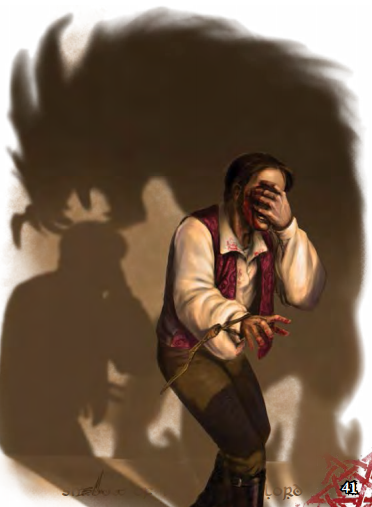
Range
SotDL can be played with theater-of-the-mind combat, using rough maps, or it can be played on an explicit grid. Ranges are defined in terms of yards, and can be used as hard measurements or more loosely.
- You: this is just for effects that target yourself.
- Reach: anything you can reach with your hands, so an adjacent space. Larger creatures have more reach.
- Short: 5 yards
- Medium: 20 yards
- Long: 100 yards
- Extreme: 500 yards
- Sight: anything you can see
There are three levels of obscurement that impose penalties to looking into these areas.
- Partial: Rain, light snow, and some fog. This imposes 1 bane.
- Heavy: a downpour, heavy snow or thick fog. This gives 2 banes.
- Total: a whiteout. This imposes 3 banes.
Lit areas impose no penalty.
Shadowed areas are considered partially obscured.
Dark areas are totally obscured.
Roleplaying
I won’t be going over this section in a lot of detail, as it has a lot of basic information that anyone reading this thread is gonna be familiar with. It encourages players to make decisions in keeping with their character’s background and personality, and to keep in mind any connections they may make either before the game or during it. It does have three interesting things, though, the optional Character Bonds system, the rules for Social Conflict and Fortune.
Character Bonds should be familiar to players of Dungeon World. You get a positive bond with one other PC and a negative bond with another. When a character that you have a positive bond with grants you a boon and you roll a 1 on it you can reroll it and use the new result. When a character you have a negative bond with grants you a boon and you roll a 6 on it, you must reroll an use the new result.
Social Conflict is a system for getting people to do what you want with words (sometimes). What I like about it is that it is very streamlined and covers most situations that would normally be determined by skills like Diplomacy and Bluff. When you try to change the behavior of an NPC, the GM will ask you to make a Challenge roll against one of their stats depending on what you want to accomplish and how you try it. I’ll go over each goal in brief, describing the roll and the possible result. If you ever roll a 0 or lower, the creature does the opposite of what you want.
Befriend
Will vs. Will
This will cause a creature to become friendly towards you, and may give you 1 boon on further social interactions with them if the GM says so.
Deceive
Intellect vs. Intellect
This will cause them to believe a lie until it is shown to be false.
Intimidate
Will vs. Will (Strength vs. Will if using physical violence)
This will get them to do whatever it was you were trying to force them to do.
Persuade
Will vs. Will
They will do what you were asking them to do, within reason.
Taunt
Intellect vs. Will
You get them angry, which could cause them to attack, lose their cool, or just become openly hostile to you.
Fortune is a status effect that the GM hands out for good roleplaying, having a good idea and sharing it with the group, if you pull off a remarkable stunt or just for making the game more fun, exciting or interesting. When you have Fortune, you can spend it in a couple of ways to represent good luck:
- You can turn a failed d20 roll into a success
- When someone else rolls a d20, you can spend Fortune to give them 2 boons
- When anyone is rolling a d6, you can spend Fortune to replace the roll with a 6
Okay, so now we get to create our Goblin!
Queegol the Fang
Strength 8, Agility 12, Intellect 11, Will 8
Perception 11
Defense 12
Health 8
Healing Rate 2
Size ½, Speed 10, Power 0
Damage 0, Insanity 0, Corruption 0
Languages: Common (literate) and Elvish
Professions: merchant, law
Immune to disease and charmed
Iron Vulnerability
Shadowsight
Sneaky
Goblin Age: 9 (11 to 25 years old)
Goblin Build: 8 (Wiry)
Goblin Distinctive Appearance: 8 (You have a tooth growing out of your forehead)
Goblin Odd Habit: 9 (You refuse to wear shoes)
Goblin Background: 3 (You accidentally got your entire tribe killed)
Goblin Personality: 5 (You try to rise above the filth and squalor of your people and do good in the world)
Profession: 2 (common), 14 (merchant)
Profession: 1 (academic), 9 (law), literate in Common
Wealth: 18!! (rich)
Interesting thing: 16 (a bag filled with curiously fleshy rods)
Personality: 19 (noble), 15 (stingy)
Equipment: dagger, noble’s clothing, cloak, 1 week of rations, a waterskin, a healing potion, a pouch containing 11 silver shillings, a personal servant, a guard and a three horses with saddles.
Queegol began her life inauspiciously. She was born a poor goblin and lived among the trash heaps, scavenging shiny objects just like her parents had always done. She had a sharp mind and sharper reflexes, but her natural inquisitiveness is what caused her to unleash doom upon her people. She was fond of books, and taught herself to read. One day, the goblins broke into a rusty iron safe that had been forgotten deep in the junkyard. Inside was a leathery tome that they urged Queegol to read from. She did, and in the process used an incantation that suddenly loosed a demon in the middle of the goblins’ small settlement. She was the only one to escape, leaving the book and the slavering demon behind her as she fled to a distant city.
Once there, Queegol her calling among the oligarchy as a lawyer. She studied the laws and regulations of the city extensively, and used her strange goblin orthogonal thinking to defend the common people, turning the law back on those who would use it to hurt others. She became well-known and respected. People called her The Fang for the tooth that grows from the middle of her forehead, which was damaged during her escape from the demon and now looks like a jagged fang. Her law practice thrived as she took on cases all across the city, with people paying her in donations, and eventually she amassed a store of wealth that most people can only dream of having.
Now she travels from city to city, providing her services to any who can afford the pittance she asks for. She has a few employees that help her out, and her stingy nature promises to grow her wealth even more as she seeks out new opportunities to help others.
Combat!
Original SA postBecause I'm bored and pretty excited about this game, it's time for more...
Shadow of the Demon Lord Part 6: Combat!
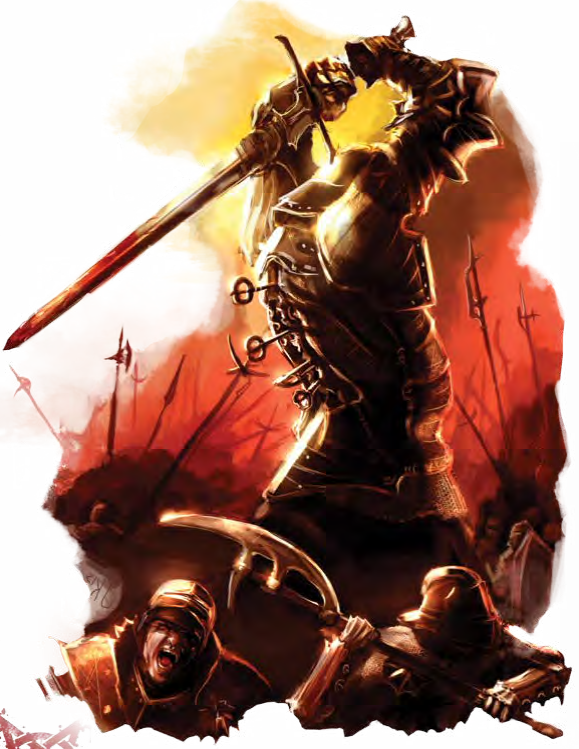
When the swords come out and blood has to be spilled, we bust out the rules for combat. Like most games, combat is one of the most important parts of the game session, and thus is where time and positioning are most closely tracked.
The first thing you have to do is establish the battlefield. This can be as rough or as detailed as you like, but people should have a reasonable mental picture of where they are in relation to the enemies and each other, and the locations of any important things in the area. Shadow of the Demon Lord fully supports the use of a grid and miniatures, but can also be played completely without those things. Personally, I don’t know of many games with crunchy combat that I could play without a map and minis, so I like that SotDL can be played that way with relative ease.
We start off with a description of awareness. If one side is unaware of the other when combat begins, they are all considered surprised until the end of the first round.
How a Round Works
There’s no initiative in SotDL. Instead, rounds are broken into fast turns and slow turns. When a round begins, the players decide who will take fast turns and who will take slow turns. Unless you have an Affliction or other effect that says otherwise, you can pick either kind of turn. The GM decides what kind of turn each creature will take as well. Then, players go first during the fast turn, then the GM goes. After that, the players go first in the slow turn, and then the GM goes. Then you end the round. If there are still hostile creatures around, a new round begins.
Basically a round looks like this:
Fast turn
Players
🔻🔻🔻
GM
🔻🔻🔻
Slow turn
Players
🔻🔻🔻
GM
🔻🔻🔻
New Round
When the round ends, the GM resolves any effects that last until the end of the round. When an effect says it lasts for 1 round, it ends at the end of the round after the one during which it was cast. Combat ends when all the creatures on one side run away, surrender or die.
A fast turn is one in which a creature can either use an action or move, but not both.
A slow turn allows a creature to use an action and move up to its speed. It can use the action at any point during the movement.
Move
Pretty self-explanatory. You can move up to your speed when you move, but there are some special considerations in terms of how you’re moving and what you might be doing while moving.
- Balance: to move across a treacherous area, like slick ice of a narrow walkway, you have to make an Agility challenge roll. On a failure, you stop moving for the round. On a 0 or below, you might fall down!
- Climb: climbing is considered difficult terrain, which reduces your Speed by half. And if there is something making life more difficult, like ice on the rocky handholds or grease on the rope ladder, you will have to make a Strength challenge roll, possible with some banes. On a failure, you stop moving for the round. On a 0 or less you will probably fall.
- Crawl: while prone you can crawl along at half your Speed. You can voluntarily drop prone without using a movement, but standing up costs you your move.
- Fly: if you can fly, you can move up to your Speed in any direction you wish. If you are rendered prone or your Speed is reduced to 0 you will fall. You may have to make Strength challenge rolls in order to fly in turbulent conditions.
- Jump: yes, there are rules for jumping both vertically and horizontally, using Agility challenge rolls for both.
- Ride: there are lots of rules to riding that I won’t get into here, but they are pretty comprehensive.
- Swim: water and other liquids count as difficult terrain, and you may have to make a Strength challenge roll in moving water. Armor imposes penalties to swimming and Clockworks cannot swim at all.
- Teleport: this works how you would expect. You ignore difficult terrain and obstacles and appear where your teleport would take you.
Action
Here we’ve got the meat and potatoes of your combat, covering all the non-movement actions you can take during a fight.
- Attack: we’ll explain this a little more in-depth later on, but this is for using weapons and casting attack spells.
- Cast a utility spell: we’ll go over utility spells in the Magic chapter, but these are your spells that don’t hurt enemies.
- Concentrate: some talents and spells require you to concentrate to maintain them, and this is how you do it. If you take damage or gain Insanity while concentrating you have to make a Will challenge roll. If you fail, your concentration is broken.
- Defend: while defending, all attack rolls against you have 1 bane, and you get 1 boon to all actions to resist attacks until the end of the round.
- End an effect: just lets you end an effect you started (usually a spell)
- Find: lets you make a Perception challenge roll to find hidden enemies and objects, targeting their Agility.
- Help: you can make an Intellect challenge roll to grant 1 boon to any ally within 5 yards.
- Hide: you can hide when you’re not being observed, using an Agility challenge roll. You remain hidden until you reveal yourself or an enemy hits you with an attack roll, taking 3 banes. While hidden, you make all attack rolls with 1 bane against the Defense or Agility of creatures you are hidden from.
- Prepare: this allows you to prepare a triggered action. You specify a trigger, like “when a creature moves into my reach, I will attack it” then, when an enemy does this before the end of the round, you can perform whatever action you specified, and you get 1 boon to the roll.
- Reload: lets you reload your weapon if it needs to be reloaded, like crossbows and guns.
- Retreat: you can move up to half your Speed without triggering free attacks.
- Rush: this lets you move up to twice your Speed
- Stabilize: you can make an Intellect challenge roll to help an incapacitated creature within reach. You get 1 bane if they’re dying. On a success, they heal 1 damage.
- Use an item: also self-explanatory. You can do things like light a torch or pull an item out of a bag.
Free attacks are a kind of triggered action everyone uses. When a creature within your reach moves out of your reach, you get to make a melee attack against them for free.
Minor actions are things that don’t take up a regular action. This is stuff like dropping a weapon or opening a door. You can usually do 1 on a fast turn and 2 on a slow turn, but it’s up to the GM.
Making Attacks
Now we’re talking! This covers the primary ways in which you’ll be dealing damage: melee, ranged, items, spells, and attacking attributes.
Melee attacks require you to pick a target and make an attack roll. This usually uses Strength, but could use Agility if the weapon has the finesse property. If you hit their Defense, you deal your damage. SotDL also has different kinds of melee attacks baked in and open to everyone:
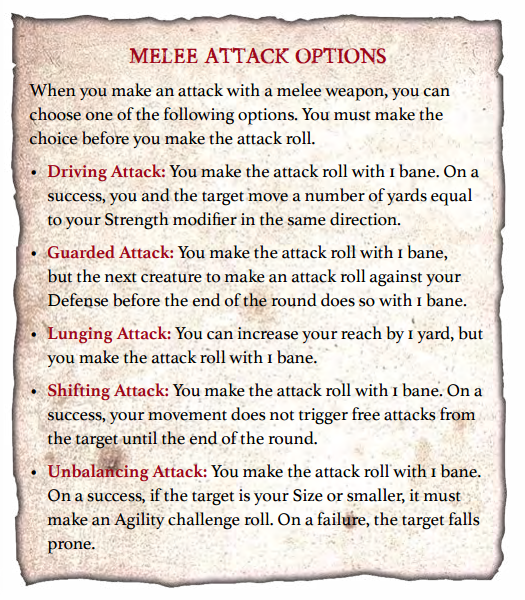
Ranged attacks are the same as melee attacks except they use Agility by default. However, unlike melee combat, ranged combat has to deal with cover in some cases,
- Half cover imposes 1 bane
- Three-quarters cover imposes 2 banes
- Total cover means the target cannot be attacked
Attacking with two weapons isn’t advised. You can use one attack to either hit a single enemy with both weapons or two enemies with one weapon. For the former, you roll with 2 banes and if you succeed you add the damage of your off-hand weapon. The latter imposes 3 banes to both attacks.
When you attack with an item, you go by the rules that item has, which we’ll see in Chapter 6. Attack items are things like acid and oil.
Attacking with spells is covered in Chapter 7, but usually they require an Intellect or Will roll against one of the targets Attributes.
Next we get to the section on attacking Attributes, which is a sort of informal stunt system. These are broken down into a few actions that cover most of the basic ways in which you can attack an enemy for bonuses and advantages.
Disarm
Strength/Agility with 2 banes vs Strength/Agility, whichever is higher
This causes the enemy to drop one thing that they are holding.
Distract
Intellect vs. Intellect
This forces the enemy to make its next attack or challenge roll before the end of the round with 2 banes.
Escape
Strength/Agility vs. Strength
This is how you escape from grabs. On a success, you break free and move half your speed without triggering free attacks from the enemy who had grabbed you.
Feint
Agility vs. Perception
When you do this, you either get 2 boons to attack the enemy’s Defense or Agility until the end of the next round or moving does not trigger free attacks from them.
Grab
Strength/Agility vs. Agility
Succeed and you’ve got ‘em grabbed!
Knock Down
Strength vs. Agility
You get 1 bane for each point of Size the creature has on you, and 1 boon if they are smaller. If you succeed, you knock them prone
Pull
Strength vs. Strength
This is how you move people around while they’re grabbed.
Shove
Strength vs. Strength
You get 1 bane for each point of Size the creature has on you, and 1 boon if they are smaller. If you succeed, you push the enemy 1 yard away, plus a number of yards equal to your Strength modifier.
Charge
This isn’t a usual maneuver in that is an attack against an enemy’s attribute. Instead it allows you to move up to your Speed and make an attack at any point during the move. Until the end of the turn, you take 1 bane to all attack and challenge rolls.
You can also try to attack any object or item held by another creature. When you do this, you take 2 banes, and not all objects can be destroyed. For example an arrow cannot damage a sword.
The chapter then ends with a chart of banes imposed in common situations. These are mostly repeated from other parts of this chapter, but it’s nice to have them all in one place.
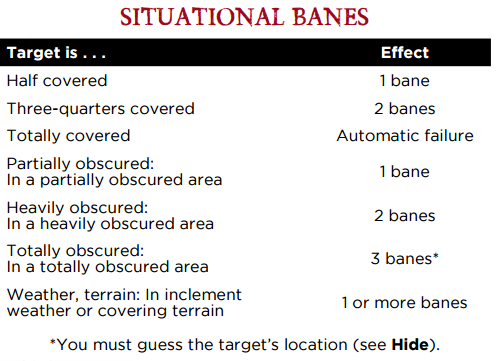
And that’s it for Chapter 2! Those are the basic rules for how to play Shadow of the Demon Lord. Chapters 1 and 2 could be used to run a Starting adventure no sweat.
Next time: The Novice Paths, and Spradley finds their calling!
The Novice Paths
Original SA post Shadow the Demon Lord Part 7: The Novice PathsOnce you finish your Starting adventure, you level up and gain your Novice Path. The four Paths map pretty well to the classic D&D retroclone standbys. You’ve got the Magician, the Priest, the Rogue and the Warrior. Each time you level up in your Novice Path, you gain some specified bonuses. These can include increases to your Attributes or Characteristics, more languages/professions, more magic or new talents.
There are optional rules includes for a Group Identity. This is a shared background that ties your group together and gives them a reason to remain a party. You can pick an Identity or roll a d6 if you want to see how your group can come together.
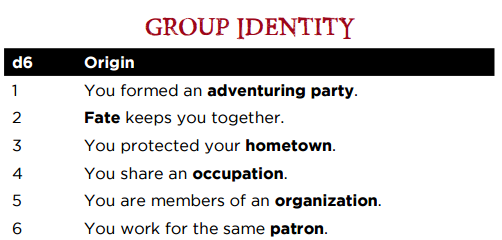
Without further ado, let’s get into the Novice Paths themselves.
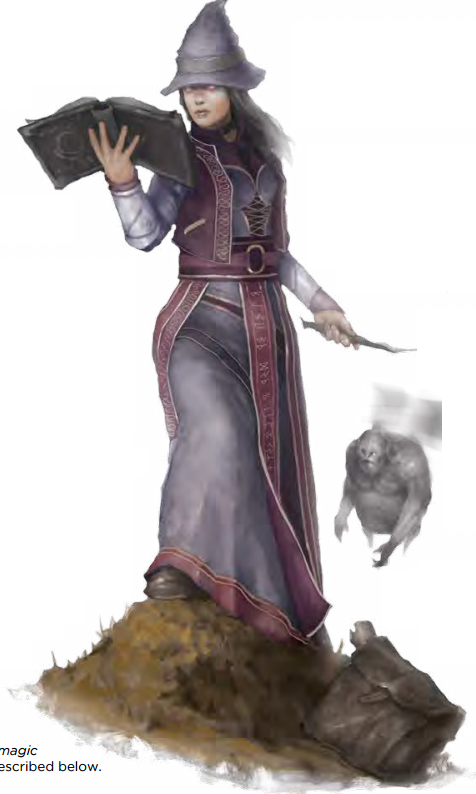
Magician
This is Shadow of the Demon Lord’s take on the magic-user. They are very barebones, offering the widest spell variety and choice of any of the Paths in the game, the Magician allows you to fill in the blanks of the class however you like. No two Magicians will ever be the same, just because of the sheer number of magical traditions and spells you can choose from.
One thing to note is that in Shadow of the Demon Lord there is no divide between arcane and divine magic. Magicians can learn the Life tradition and cast healing spells just like Priests, and Priests are likewise not barred from taking destructive spells exclusively.
Level 1 Magician
Attributes: +1 to two
Characteristics: Health +2 and Power +1
Languages/Professions: You become literate in all the languages you know and add one academic profession of your choice.
Magic: You get four choices, and with each choice you can either discover a magical tradition or learn 1 spell from a tradition you already know.
Cantrip: When you discover a new tradition you get an extra level 0 spell from it (all traditions have 2 level 0 spells, and you get one when you discover it, so this talent means a Magician always knows all the level 0 spells for any tradition they learn).
Sense Magic: A spell all Magicians get for free, does that you’d think
Level 2 Magician
Characteristics: Health +2
Magic: You get two choices, discovering a tradition or learning a spell with each.
Spell Recovery: You can use an action to heal damage equal to your Healing Rate and regain one casting of a spell you’ve learned. You can do this once per rest.
Level 5 Expert Magician
Characteristics: Health +2 and Power +1
Magic: Discover a tradition or learn one spell
Counterspell: You can counter spells you see other magic users casting with a triggered action, causing them to take 1 bane to the attack roll and you get 1 boon when resisting it.
Level 8 Master Magician
Characteristics: Health +2
Magic: Discover a tradition or learn one spell
Improved Spell Recovery: You get back two castings of a spell per use of Spell Recovery now.
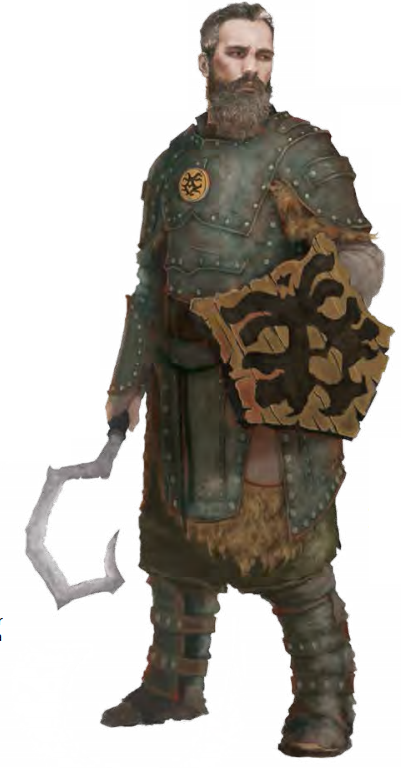
Priest
These guys aren’t clerics, there’s a path for that later on. They’re hardier than Magicians but have less spell variety in return. They’re more like junior clerics, but when we get into the Expert Paths you’ll see that they have tons of ways they could develop and branch out, so if you want to start working your way up to a druid, paladin or a spiritual berserker, Priest is where you want to start.
Priests in SotDL don’t derive their power from the gods, who are distant from the world. Their power comes from within, but the faith they follow shapes their thinking and magical practices, and therefore the traditions they can learn. Each god/pantheon has a few choices to make on that front:
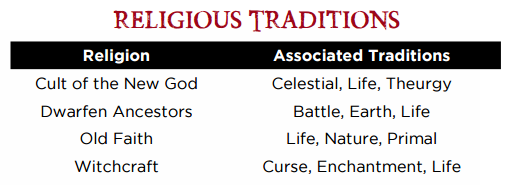
You’ll notice that every religion has Life as a tradition. This is to make sure all Priests have access to healing magic, which almost exclusively comes from the Life tradition.
Level 1 Priest
Attributes: +1 to two
Characteristics: Health +4 and Power +1
Languages/Professions: You can become literate in one language you speak or add a new language. You get one religious profession.
Magic: You discover one tradition associated with your faith. Then you make two choices, discovering one tradition from your faith of learning one spell any tradition you know.
Shared Recovery: You can use an action to heal damage equal to your Healing Rate, and then allow a target within short range to do the same. You can do this once per rest.
Level 2 Priest
Characteristics: Health +4
Magic: You make two choices, either discovering a tradition from your faith or learning a spell.
Prayer: You can use a triggered action when a creature within short range makes an attack or challenge roll to grant them 1 boon on the roll.
Level 5 Expert Priest
Characteristics: Health +4, Power +1
Magic: Learn one spell from your traditions.
Divine Strike: When you use Prayer to grant 1 boon to an attack roll, the attacker also deals 1d6 extra damage.
Level 8 Master Priest
Characteristics: Health +4
Magic: Learn one spell from your traditions
Inspriring Prayer: When you use Prayer on someone other than yourself, you make attack and challenge rolls with 1 boon for 1 round.
Improved Shared Recovery: you can use Shared Recovery twice per rest.
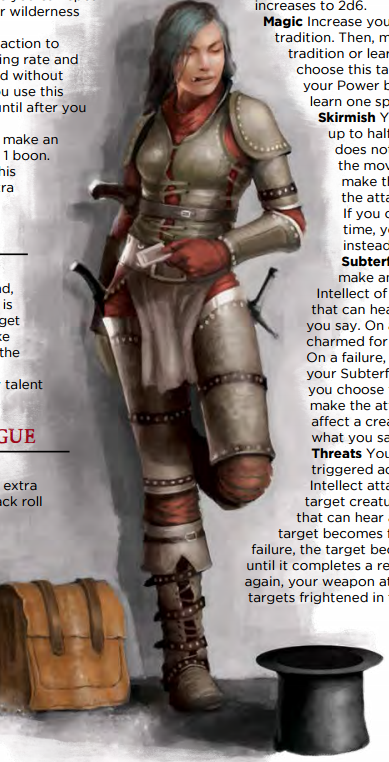
Rogue
Probably my favorite Novice Path from a design perspective, the Rogue is geared towards letting you go in any direction you want later on. You can get better at killing enemies, becoming a skill monkey, becoming the ultimate thief, or even branching out into a magic Path. Rogues also have a strong core design focused around making them better at attacking, making your attacks both more reliable and harder-hitting. Rogues are the glass cannons of lower level characters.
Level 1 Rogue
Attributes: +1 to two
Characteristics: Health +3
Languages/Professions: You can either speak a new language or add a new common, criminal or wilderness profession.
Nimble Recovery: You can use an action to heal damage equal to your Healing Rate and them move up to half your Speed without triggering free attacks. You can do this once per rest.
Trickery: Once per round, you can make an attack or challenge roll with 1 boon. If you use this to do an attack roll, you get 1d6 extra damage.
Level 2 Rogue
Characteristics: Health +3
Exploit Opportunity: Once per round, when you roll above a 20 on an attack roll and get 5 more than the target number, you can take another turn before the end of the round.
Roguery Talent: You can choose a Roguery Talent (see below)
Level 5 Expert Rogue
Characteristics: Health +3
Dirty Tricks: Whenever you make an attack roll with 1 boon, you deal 1d6 extra damage.
Rogue Cunning: You can use Trickery twice per round.
Level 8 Master Rogue
Characteristics: Health +3
Roguery Talent: You get another Roguery Talent (see below)
Roguery Talents
- Backstab: Once per round, when you make an attack with a basic or simple weapon with at least 1 boon, you deal 1d6 extra damage. You can take this twice to deal 2d6 extra damage.
- Magic: You increase your Power by 1 and discover one tradition. Then you can make two choices, discovering a tradition or learning a spell with each. If you take this again, increase your Power by 1 and discover another tradition or spell.
- Skirmish: You can move up to half your Speed, without triggering free attacks, and make an attack with 1 bane that deals 1d6 extra damage. Take this again to move your full Speed.
- Subterfuge: you can use an action to make an Intellect attack roll against a creature’s Intellect. If you succeed, they are charmed for 1 round. Take this again to get 1 boon to the roll and affect creatures who can’t understand you.
- Threats: You can use an action to make an Intellect attack roll against a creature’s Will. If you succeed they are frightened for 1 round. If you take this again, your attacks against that creature deal 1d6 extra damage.
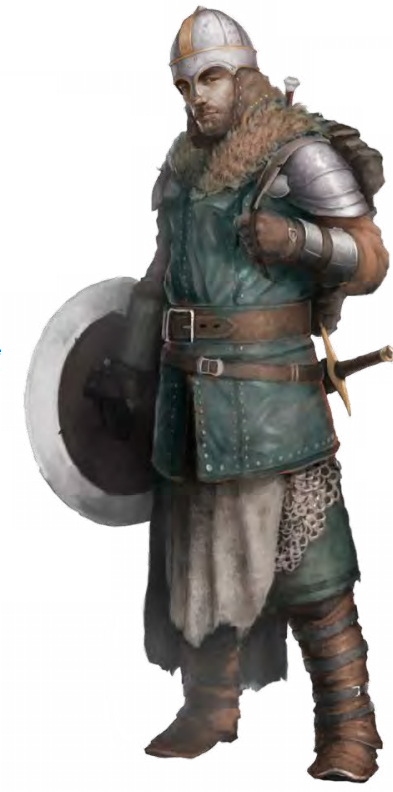
Warrior
We all know and love the Warrior. This Novice Path is all about one thing: dishing out damage while taking punishment and remaining on their feet. There isn’t a lot to the Warrior’s design, but there doesn’t have to be, as the Expert and Master Paths later on give you tons of variety and flavor, while the Warrior makes sure that no matter what direction you choose to go, you’ll always be a reliable source of damage and a sturdy tank.
Level 1 Warrior
Attributes: +1 to two
Characteristics: Health +5
Languages/Professions: You can add one common, martial or wilderness profession.
Catch Your Breath: You can use an action or triggered action to heal damage equal to your Healing Rate. You can do this once per rest.
Weapon Training: When you attack with a weapon, you get 1 boon.
Level 2 Warrior
Characteristics: Health +5
Combat Prowess: Weapon attacks deal 1d6 extra damage.
Forceful Strike: When you roll above a 20 and exceed the target number by 5 on an attack roll, you deal 1d6 extra damage.
Level 5 Expert Warrior
Characteristics: Defense +1, Health +5
Combat Expertise: when you attack with a weapon, you either deal 1d6 extra damage or you can make another attack against a different target before the end of the turn.
Level 8 Master Warrior
Characteristics: Health +5
Grit: You can use Catch Your Breath twice per rest
Combat Mastery: When you attack with a weapon, you either deal 1d6 extra damage or you can make another attack against a different target before the end of the turn. This is cumulative with Combat Expertise, but each attack must have a different target.
And that’s it for the Novice Paths! Now that we’ve been over them all, Let’s talk about which Path Spradley would likely head into. Spradley knows they’re big and slow and not that good with people, so when they are thrust headlong into a life of adventure and excitement, they do what comes naturally: they pick up a weapon and start smacking people with it. Before long, they find that they have a knack for this, and take it up as a way to defend themselves.
Spradley is following the path of the Warrior, and to represent this, we make the following changes: +1 to Strength and Intellect, + 5 to Health, they’ll get the Mercenary profession, and get the Catch Your Breath and Weapon Training talents. Additionally, they get a battleaxe and a large shield.
Spradley Sprocket
Strength 12, Agility 8, Intellect 11, Will 8
Perception 9
Defense 15
Health 17
Healing Rate 4
Size 1, Speed 8, Power 0
Damage 0, Insanity 0, Corruption 0
Languages: Common (Literate)
Professions: Folklore, Religion, Mercenary
Immune to disease, poison, asleep and fatigued
Key
Mechanical Body
Repairing Damage
Catch Your Breath
Weapon Training
Gear: Battleaxe, large shield, basic clothing, backpack, 1 week of rations, waterskin, tinderbox, 2 torches and a pouch with 2 copper pennies.
Spradley has a few more miles on them. During their quest to decipher the message written inside their arm, they fell in with a band of mercenaries who made good use of their mechanical muscle. Spradley learned the way of the axe and shield, and fought well among the humans and orcs they traveled with. They blew their pay on books, learning more about the history of the clockworks and their heritage, and studied up even more on folklore, especially that of the golems. Spradley believes they are close to finding out the truth, traveling to more and more cosmopolitan cities in search of a scholar who can help them understand whatever secret is etched into their own body.
Audience Participation
We’ve been over the Novice Paths, so it’s time to decide on what Queegol will become. She’s traveling around, working in various cities and towns, which just makes it easier for her to get sucked into a world of adventure along the way. Take a look at the Novice Paths and let me know which one you would like to see Queegol enter into.
The choices:
Magician
Priest
Rogue
Warrior
Also, I want to leave you all with a teaser for Chapter 4: Expert Paths. Shadow of the Demon Lord’s character advancement system is one of my favorite things about it, and Expert is where things really start to open up in terms of character diversity and build choices. So here are the Expert Paths in the core book, to give you an idea of what’s coming up.
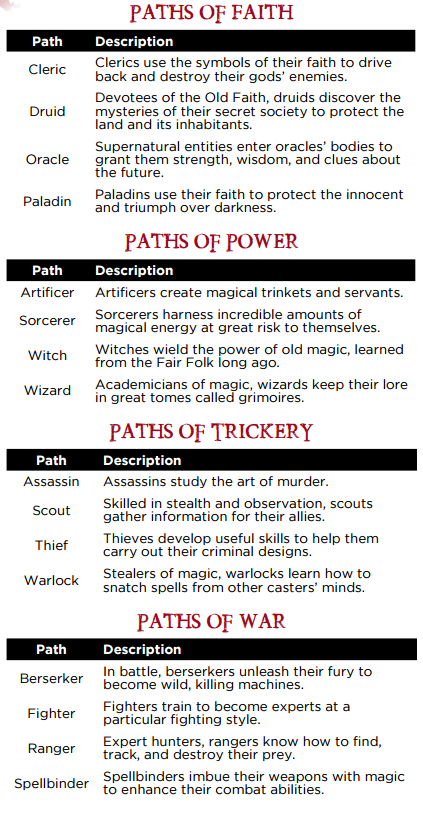
Next time: The Expert Paths!
The Paths of Faith and Power
Original SA post Shadow of the Demon Lord Part 8: The Paths of Faith and PowerUpon reaching level 3, you get to pick your Expert Path. These are grouped into four groups of four that are themed around the four Novice Paths. The book makes very clear that while you can follow your grouping and take up an Expert Path suggested by your Novice Path, you are not locked into this. Expert Paths have no prerequisites, and you can move into any of them that you want, so long as you can work it into the story.
A big part of being an Expert level character is your Objective. This is something you’d like to accomplish in your time as an Expert character, a goal to work towards while leveling up. The book provides a table for you to randomly roll on if you like, you can pick one of your own choice or make up something that suits your character. You share your objective with the GM, and they use it to guide the campaign, pushing you to accomplish your objective. I think this is a really useful tool for indicating what the player is interested in, and helping the GM tailor the game to their desires. A few example objectives are:
“A castle, tower, ship or some other kind of property.”
“To be remembered after I have left this world.”
“To make a friend from an enemy.”
“To prove to everyone that I am, in fact, a badass.”
The GM can use objectives to tie your group together, giving your objectives overlapping goals and creating adventures that help your group accomplish them together. Your friends help you accomplish your objective, and you in turn help them with theirs.
The game also provides rules for choosing a second Expert Path at level 7 instead of taking a Master Path.
I’m going to go over the Paths by the sections they’re broken down by. In the book they’re presented in alphabetical order, but I like presenting them in themes. I’m also not going to go over them in as much detail as I did in the Novice Path section. Wait until you see how many Master Paths there are to cover.
Paths of Faith
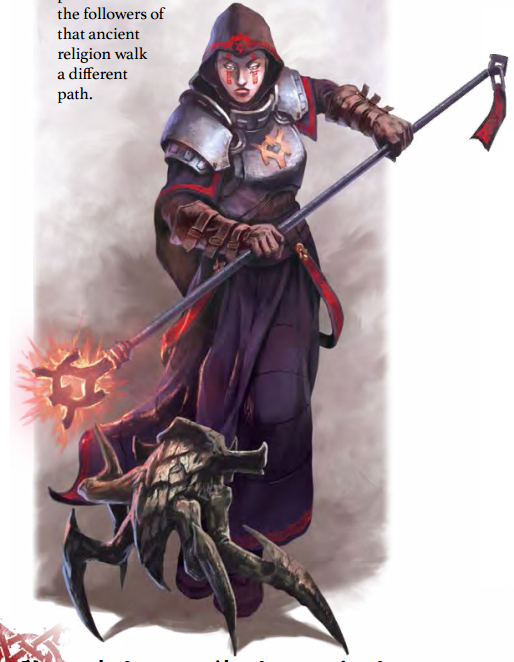
Cleric
The cleric is all about their holy symbol and things they can do with it. A symbol usually looks like the divine iconography of the cleric’s god, and they often decorate their armor with them but rely on a single symbol that they channel their magic through and also use to power a lot of their talents.
Level 3 Cleric
All level 3 characters get to add +1 to two Attributes. Clerics get more Health and Power, and they get another language or a religious profession. They discover more traditions or spells that are associated with their religion, and get Conviction, which allows them to make Will challenge rolls to resist frightening and horrifying effects with 1 boon. They also get Icon of Faith, which lets you choose one tradition you know, and all spells you cast with a holy symbol of your god give you 1 boon to cast them and the targets take 1 bane to resist.
Level 6 Cleric
A little more Health and magic, and you get Empowered Symbol, which means that any spell cast using Icon of Faith that heals or does damage heals or damages 1d6 more healing or damage.
Level 9 Master Cleric
Even more Health, Power and magic, and you get Divine Power, giving the benefits of Icon of Faith to any attack spell cast from any tradition associated with your religion.
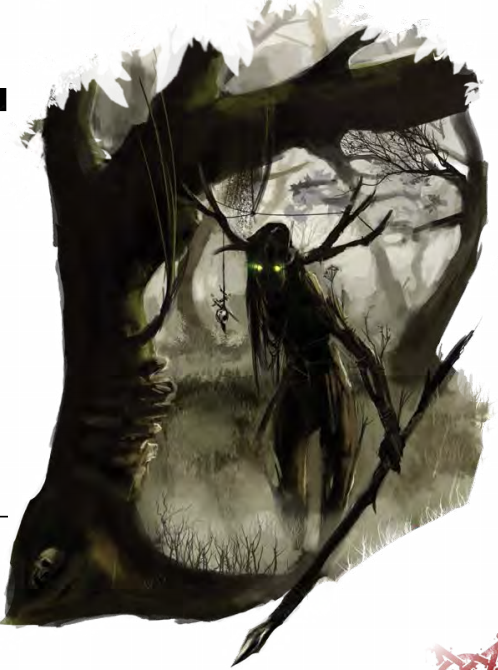
Druid
You know them, you love them, the druid is the tree-hugging spellcaster of SotDL, but a little hardier and more outdoorsy than most casters. They have tons of flavor, with a first tier of powers that make the druids stand out from other Paths. While their spell selection is pretty limited, they make up for it with a few special powers that no one else can get.
Level 3 Druid
A little extra Health and Power and either another language or a religious or wilderness profession. You get to discover the Life, Nature or Primal traditions, or learn one spell from one of those traditions. You also get Druid Mysteries, which allows you to do all of the following:
- Identify any animal or plant you see.
- Know if water and food you see are safe to consume.
- Accurately predict the weather up to 24 hours in advance if you’re outside and can see the sky.
- Move at full Speed across difficult terrain created by natural features.
- Leave tracks when moving across natural terrain only when you choose.
A bump in Health and some more magic, and Tree Walker, allows you to teleport between trees within medium range of each other.
Level 9 Master Druid
Another jump in Health and Power, another spell, and Resist Elements, which means you take half damage from cold, lighting, thunder and fire.
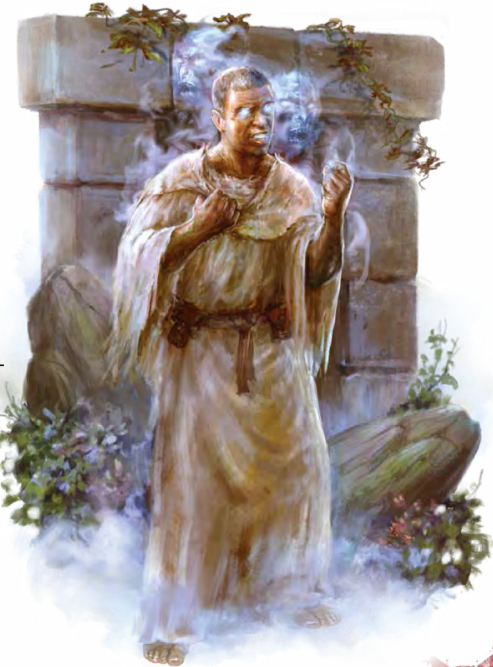
Oracle
One of my favorite Paths in the game, the oracle is best described as a divine barbarian. By allowing supernatural entities to enter their bodies, the oracle gets enhanced combat prowess and access to divine wisdom and minor bits of prophecy. Doing this puts a strain on them though in the form of Insanity, which builds up each time they allow themselves to be possessed.
Level 3 Oracle
You get more Health and Power, plus another language or profession and you can either discover another tradition or learn a spell from one of your traditions. You also get Divine Ecstasy, which allows you to enter a state of possession for 1 minute, granting all the following bonuses:
- Health +10.
- You can’t be charmed, compelled or frightened.
- You can’t gain Insanity.
- You make all Intellect, Will, and Perception attack and challenge rolls with 1 boon.
Level 6 Oracle
More Health and another spell, and you get Commune with the Gods, which lets you use Divine Ecstasy to ask up to three questions with yes or no answers and then make a Will roll with 1 bane. On a success the GM answers truthfully. If you fail, you gain 1 Insanity.
Level 9 Master Oracle
More Health and Power and you earn one more spell. Divine Ecstasy gets boosted by Avatar, which gives you the following additional effects:
- Defense +1
- You make all Defense and Agility attack and challenge rolls with 1 boon.
- Your attacks deal 1d6 extra damage.
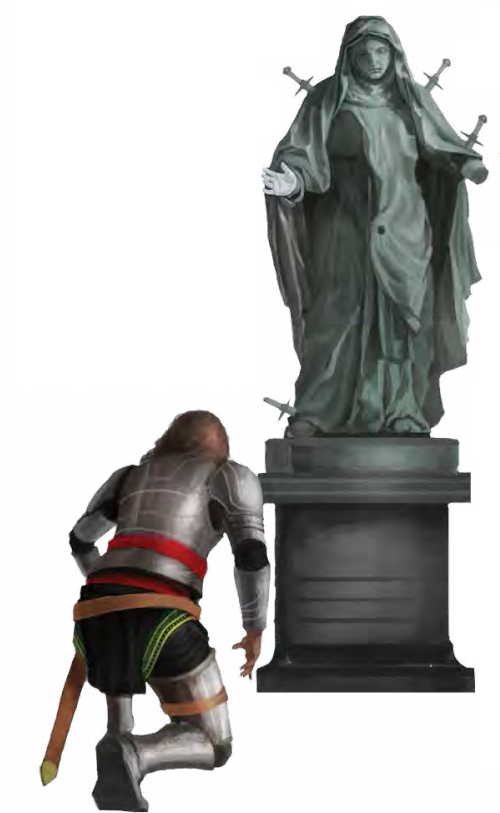
Paladin
Now we’re back in familiar territory. Paladins are holy warrior, crusaders for the gods, and they learn to channel magical energy through themselves to destroy their enemies, heal their allies and gain supernatural powers. Paladins can serve any of the gods, but lend themselves towards the more zealous faiths. The paladin is a very strong Expert Path with a wide range of powers that make them strong melee combatants and lets them keep their friends on their feet.
Level 3 Paladin
More Health and 1 point of Power, and you can either discover a tradition associated with your religion or learn a spell from a tradition you already know. You also get Divine Smite, which allows you to, on a successful attack with a weapon, expend a casting of a spell to deal an extra 1d6 damage per rank of the spell you expended. If the enemy is undead, demon, devil, spirit or fae you get another 1d6 on top of that. And you get Faith Healing, a support talent that lets you expend a casting of a spell while touching a creature to allow them to heal damage equal to half their Healing Rate or remove a poison or disease affliction.
Level 6 Paladin
A bit of Health and a new spell, and you get Divine Vigor, meaning you cannot be diseased or poisoned. You also get Sense Enemies, which allows you to spend an action to innately know the location of all enemies within medium range for 1 minute.
Level 9 Master Paladin
Some more Health and Power, another spell, and the Holy Radiance talent, which gives you the ability to summon a divine light that empowers your allies and weakens various kinds of supernatural foes.
Paths of Power
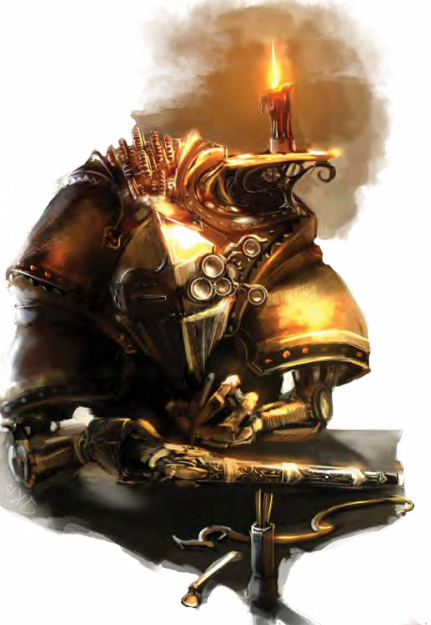
Artificer
Combining magic and engineering, the artificer is a versatile Path that can provide all kinds of useful gear to your party. Later on they can imbue items they create with spells and even create mechanical minions to help out.
Level 3 Artificer
You get the standard Attribute increase, as well as some Health and Power. You can either speak a new language or get a new academic profession, and either discover a new tradition or learn a spell. You get your core ability, Artificer’s Bag, which contains loose parts with a value equal to twice your party level in gold. You can spend an action, 1 minute, and use a toolkit to assemble those parts into any piece of gear in the game, with a value equal to or less than the amount of gold in the bag. You can make any number of these items so long as their total value isn’t more than your bag can have. Once you complete a rest, these items fall apart and their value is returned to the bag.
Level 6 Artificer
More Health and either another tradition or spell, and you get the Store Spell ability, which allows you to imbue a spell into any item created from your Artificer’s Bag. The spell is stored until expended or you rest, and anyone can use the spell without needing to meet the Power requirements.
Level 9 Master Artificer
You start off with Health, Power and either a tradition or a spell. You then get Mechanical Servants, a really cool talent that lets you make small constructs (statted in the bestiary). 1 gold gets you a servant, and you can spend another gold to make it fly. You can make as many servants as you have gold in your bag to support them, and they fall apart when you complete a rest.
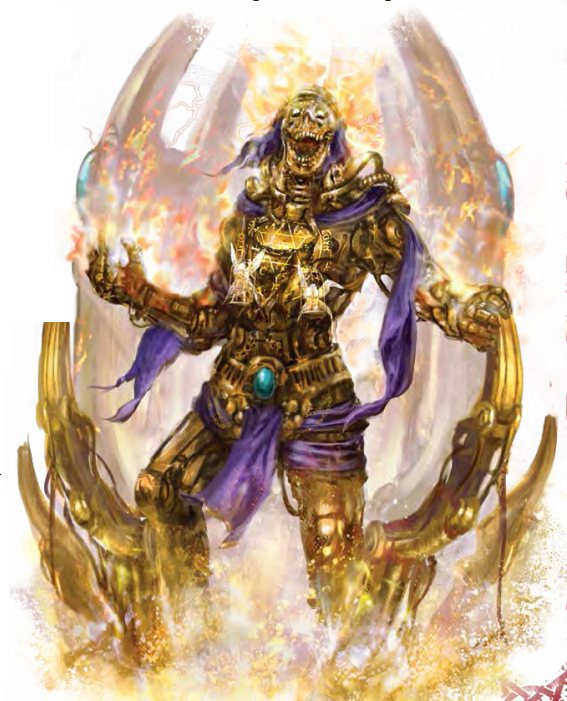
Sorcerer
These guys aren’t like your standard D&D sorcerer. They are standard magic users who push themselves to their limits and drain energy from the environment itself to fuel their magic. They can accomplish amazing things, but that energy builds up inside them, and if they fail to contain it they explode, wreaking havoc on anyone nearby but leaving them unscathed.
Level 3 Sorcerer
Increase two Attributes by 1, gain a little Health and a point of Power, and discover a new tradition or learn a spell. You get Sorcery, which allows you to empower an attack spell, giving you 1 boon to the attack roll and the target 1 bane to resist. When you do this, you gain a point of strain. Sorcerous Strain is the other thing. You build up strain, and at the end of each round in which you gained strain, you make a Will challenge roll with a number of banes equal to your strain. If you fail, you explode with power, dealing 1d6 damage per point of your Power to everything within range. When this happens your strain is set to 0.
Level 6 Sorcerer
You get more Health, and either a new tradition or a spell, and access to Greater Sorcery. When you cast a spell you can take 1 strain to apply one of the following effects to the spell:
- If the spell requires an attack roll you get 2 boons.
- Creatures resisting the spell roll with 2 banes.
- Increase the range of the spell by one step.
- Double the spell’s area of effect.
- If it deals damage, you deal 2d6 extra damage.
- If it heals damage, you heal 2d6 extra damage.
A little more Health and a point of Power, and either a new tradition or a spell. And you get Sorcerous Blast, which lets you aim at a creature in medium range, reduce your strain by 1, and then make an Intellect or Will roll against their Agility. On a success, they take 2d6 damage.
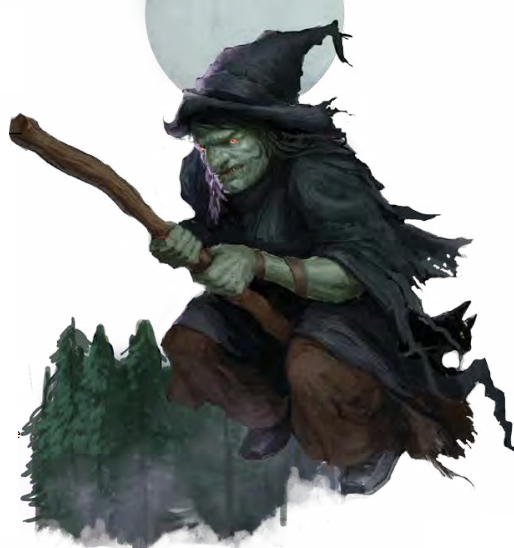
Witch
The witch is an interesting Path that has very thematic powers with a dash of magic to expand their capabilities. They are magic users who learned their practices from the Fair Folk long ago, and witchcraft is handed down on an individual basis. Witches can be found anywhere, but typically live in secluded areas on the fringes of civilization and society, working as spirit healers and soothsayers for small villages.
Level 3 Witch
You get the standard Attribute increase, with some Health and Power. You can speak another language, add an academic profession of add a common/wilderness profession. You discover one tradition or learn a spell. You get the Witch Fire spell, which allows you to create a damaging ball of green fire that you can move around the battlefield and teleport to. The final talent at this level is Guidance, which lets you use a triggered action to give a creature that can see an understand you 2 boons on a challenge roll.
Level 6 Witch
At this level you get a Health increase, another tradition or spell, and the Flying Broom spell, which of course lets you expend a casting of a spell to make a broom into a flying vehicle. You can even take a passenger with you!
Level 9 Master Witch
Health and Power increases, and another tradition or spell. Additionally you get Lasting Bond, a talent gives you and a willing creature bonuses when you’re close to each other, and allows you to communicate across any distance with mirrors.
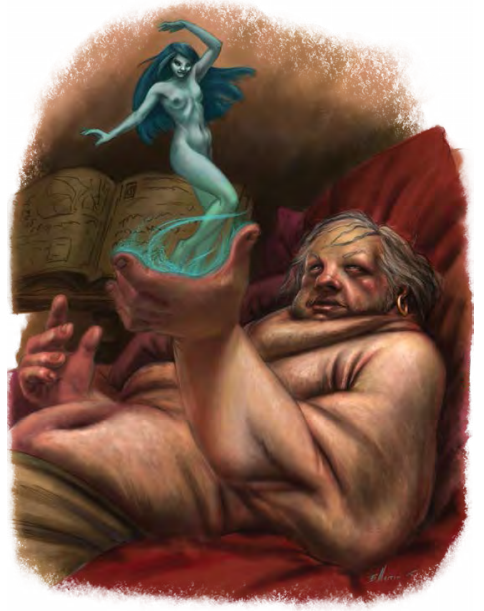
NWS for nudity and general grossitude
Wizard
A pretty close analogue to the D&D equivalent, the wizard has a little more flavor out of the box. They are versatile spellcasters who use big spellbooks called grimoires to expand their spellcasting capability even more than normal. With even more expanded magical powers later on, wizards are the most reliable and flexible spellcasters in the game.
Level 3 Wizard
You get your Attribute increases, as well as some Health and Power. You can speak another language or get an academic profession, and you discover a tradition or learn a spell. You also get your Grimoire, which is a book with any three spells of a rank you can cast inside it. While holding it, you can expend a casting of a spell to instead cast any spell from your grimoire with an equal or lower rank. When you learn a spell that is in your grimoire you can replace it with a new spell that you have the rank to cast.
Level 6 Wizard
More Health, and either a new tradition or a spell. You also get Spell Expertise, which gives you an extra casting of all rank 0 and 1 spells you know.
Level 9 Master Wizard
A little more Health and some Power, another tradition or one spell, and the Spell Mastery talent, which gives you 6 spell points. When you cast a spell, you can expend 1 + the spell’s rank in spell points to cast it without expending the casting. You regain all spell points when you complete a rest.
We're in a three way tie between Magician, Rogue and Priest on Queegol. Gimme some more votes and I'll get her statted out for the next post.
Next time: The Paths of Trickery and War!
The Paths of Trickery
Original SA post Shadow of the Demon Lord Part 9: The Paths of Trickery and WarThe Paths of Trickery
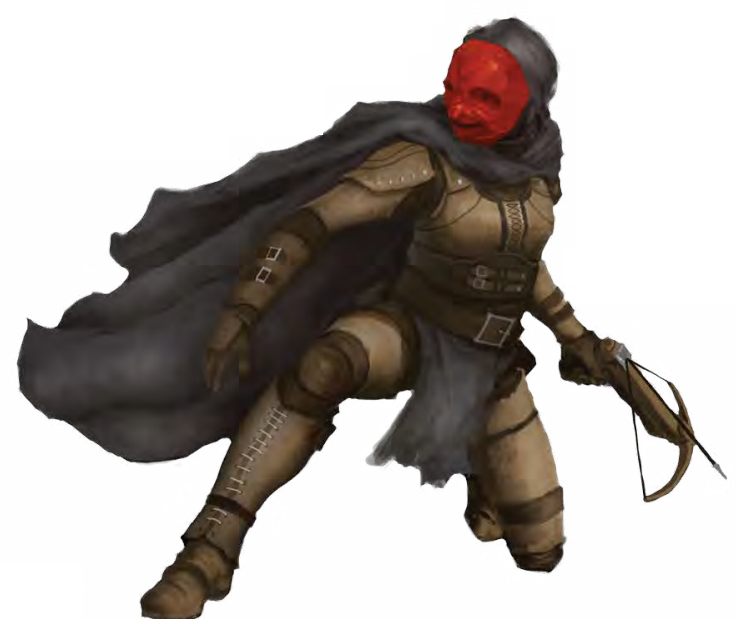
Assassin
This Path provides pretty much what you’d expect. If you want to be a sneaky killer or a spy with a license to kill, you can’t go wrong with the Assassin. They get their core ability early on, and when combined with the talents of a Rogue alone they become formidable fighters, and some Master Paths offer even more abilities that enhance the assassin’s skill at quickly eliminating enemies.
Level 3 Assassin
You get your two Attribute increases, some Health and an extra point of Perception. You then get either another spoken language or a common or criminal profession. Assassinate is your defining talent, allowing you to make an attack against a surprised creature or one you are hidden from, forcing them to make a Strength challenge roll. If they fail, they take damage equal to their Health, which remember means instant death in Shadow of the Demon Lord. You also get Disguise Expertise, allowing you to spend an action and use a disguise kit to disguise yourself, and Quick Reflexes, which gives you the ability to spend an action to hide or retreat.
Level 6 Assassin
More health and the ability to Manufacture Poison. This lets you spend a little time and money to create doses of poison, which we’ll go over in a later chapter.
Level 9 Master Assassin
A bonus to Health and Killer’s Eye, which lets you study a creature that is unaware of you. On a successful Perception challenge roll you make all attacks against that creature with 1 boon and you get 2d6 extra damage.
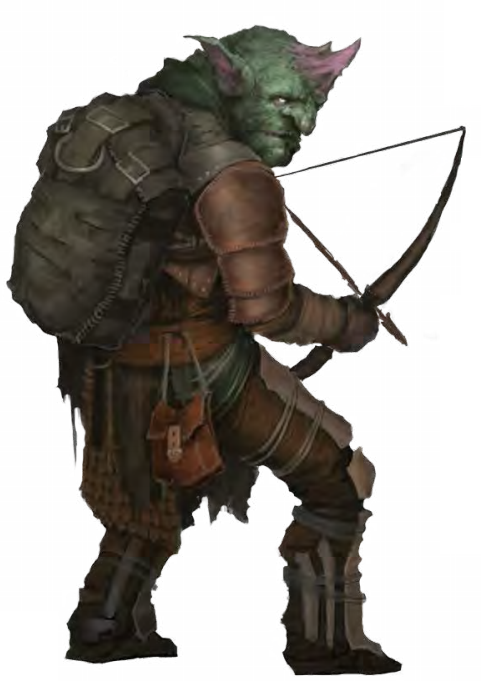
Scout
A pretty close analogue to rangers, scouts are the stealthy vanguard of any party. They can use melee or ranged weapons in equal measure, but are focused around a support role in that their observations make their party more effective. A scout in the right place at the right time can melt an enemy with support from their party members.
Level 3 Scout
Attribute increases, more Health, +1 to Perception and +2 to Speed, which is rare in this game. You can speak another language or get a wilderness profession. You gain Alertness, which gives you a boon to all Perception rolls and you can’t be surprised unless you’re unconscious. Forward Observer gives you a boon to sneaking and hiding when you’re not close to your party, Quick Reflexes allows to to use an action to hide or retreat, and Trackless means you don’t leave tracks on solid ground unless you choose to.
Level 6 Scout
More Health and Reveal Weakness, which allows you to spend an action to target 1 creature within reach. For one round, all allies get 1 boon to attack that creature.
Level 9 Master Scout
Another boost to Health and Low Blow. This talent means that when the target of Reveal Weakness takes damage, you can use a triggered action to attack them.
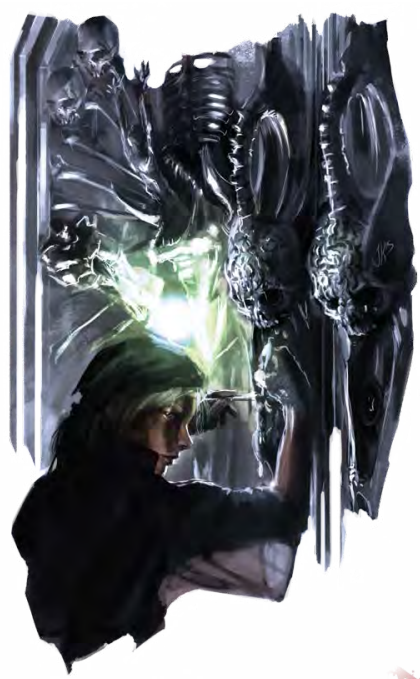
Thief
Ah the thief. This is a straight continuation of the rogue, with a set of talents to pick from that customize your thief however you like. They have a narrower focus than the rogue, as your choice of thief means you want to really get deep into theivery and subterfuge.
Level 3 Thief
Attribute increase, +1 Perception and more Health, plus either another spoken language or a criminal profession. Quick Reflexes is one you’ll remember, allowing you to take an action to hide or retreat, and you get two choices from the Thievery Talent list (see below).
Level 6 Thief
Another +1 to Perception and a bit of Health, plus Dodge, which allows you to take an action or triggered action and choose one creature you can see. For 1 round, they take 1 bane to hit you and you get 1 boon to resist their attacks. You also get another Thievery Talent.
Level 9 Master Thief
A bump in Health and Opportunist, which allows you to use a triggered action to attack any creature within reach that takes damage. And you get your final Thievery Talent
Thievery Talents
- Escape Artist: automatically escape from grabs and escape from other bones with an Agility challenge roll
- Hide in Shadows: you can hide even while being watched.
- Keen Senses: 1 boon to Perception rolls.
- Move Silently: you get 2 boons to move stealthily.
- Open Locks: if you have lockpicks, you can pick most locks automatically. If the GM calls for a roll, you get 1 boon.
- Pick Pockets: you can use a triggered action to steal things from nearby creatures without them noticing.
- Scale Walls: you ignore difficult terrain while climbing and you make climbing challenge rolls with 1 boon.
- Trap Sense: when you search for traps or roll to resist their effects, you make the roll with 1 boon.
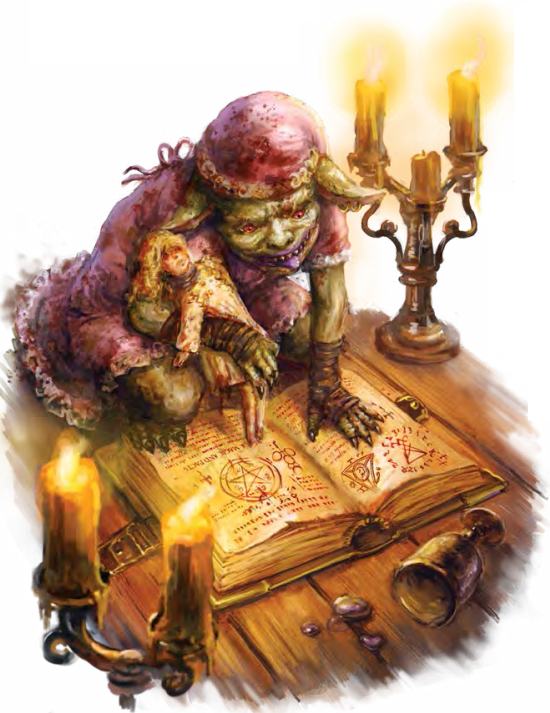
Warlock
If you’re familiar with the Blue Mages of Final Fantasy, you’ve pretty much grasped what the warlock does. While they do know a little magic of their own, they focus themselves around snatching spells from the minds of their enemies and using their own magic against them. Warlocks generally either didn’t begin as spellcasters, or they never finished their training, instead preferring the quick and easy way to power.
Level 3 Warlock
You get your Attribute increases, more Health and a point of Power, either another spoken language or a spell and then a choice of a tradition or a spell. Steal Spell is your bread and butter ability, allowing you to make an Intellect attack roll against an enemy’s Intellect when they try to cast a spell. On a success, they fail to cast the spell and if your Power is high enough you gain a casting of the spell that lasts until you expend it or until you complete a rest. You can use this talent once per rest. Additionally, Vanish lets you turn invisible for one round after you take damage, but if you expend the casting of your stolen spell you can extend the duration to one minute.
Level 6 Warlock
The customary increase in Health and either another tradition or spell. Elude Divination is a talent that makes Divination spells used against you fail. Expert Spell Thief gives you two uses of Spell Steal per rest.
Level 9 Master Warlock
At this level, the warlock gets a bump in Health and another point of Power, as well as a choice between a tradition and a spell. Your abilities grow and you get Spell Thief Mastery, which lets you Steal Spell three time, and it now always succeeds and you can cast the spell regardless of your Power. And you get Vanishing Escape, allowing you to teleport a short distance when using Vanish.
Paths of War
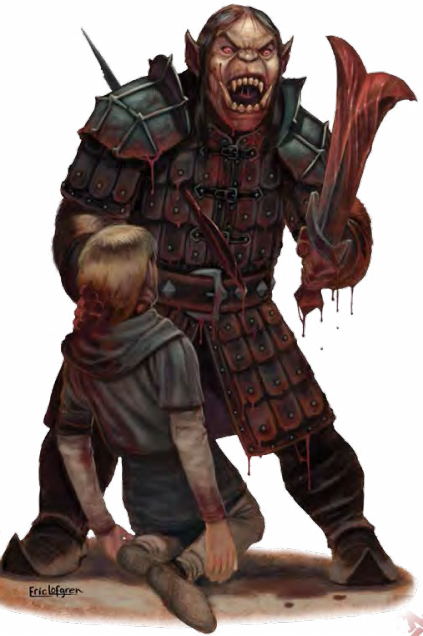
Berserker
Whatever you’re picturing, you’re right on the money. Berserkers are warriors who lose themselves in their lust for battle, hacking and chopping away until their collapse in exhaustion. Once they start fighting they can’t stop, and this obsession with the fight frays their sanity and makes them susceptible to losing control and attacking anything and everything in sight.
Level 3 Berserker
Starting out, the berserker gets +1 to two Attributes and a big Health boost. They gain the Berserk talent, which allows them to enter a state of bloodlust for 1 minute. When they come out of it they have to make a successful Will challenge roll or gain 1 Insanity. Berserk grants the following:
- Health +10
- Immunity to charmed, compelled and frightened
- You take 1 bane to attack rolls
- Your attacks with weapons deal 1d6 extra damage
- You have to attack each round, using charge if necessary
Level 6 Berserker
Now you get another big boost to Health as well as Ferocious Wrath, which gives you +2 Speed while berserking and gives you 1 boon when attacking frightened creatures. For synergy, you get Frightful Wrath, which frightens creatures who are close by when you start berserking.
Level 9 Master Berserker
A final big Health increase and Reckless Strike, which lets you make attack rolls with 2 banes but deal 2d6 extra damage on a hit.

Fighter
That old standby, the fighter. In Shadow of the Demon Lord, fighters are the undisputed masters of what they do. This is a very solid Path that gives you reliable abilities, good tankiness, and ensures that you’re the toughest threat on the battlefield. If ignored, a fighter is devastating.
Level 3 Fighter
Increase two Attributes by 1, then take a bump in Health and either learn another language or get a profession. You also get a Fighter Talent (see below).
Level 6 Fighter
Even more Health and Durable, which means your Healing Rate is now equal to your Health divided by 3.
Level 9 Master Fighter
Another jump in Health, and Weapon Mastery, a talent that makes it so that when you roll a weapon attack and the roll is 9 or less you get to reroll it, but you must use the second result.
Fighter Talents
- Defense Expertise: a flat +1 to Defense.
- Fight with Anything: lets you deal 1d6 with any improvised weapon and gives you 1 boon to attack rolls with improvised weapons.
- Powerful Attack: you can take a bane on an attack roll with a heavy weapon to deal 1d6 extra damage.
- Precise Attack: when using a swift weapon you can attack Agility instead of Defense.
- Shield Bash: when you succeed on an attack with a shield, your next attack against that target gets 2 boons.
- Swift Reload: you can reload with a triggered action, but take 1 bane to reload and shoot in the same round.
- Swift Shot: you can attack twice with a ranged weapon without the reload property, but take 2 banes to the second shot.
- Fight with Two Weapons: when you attack with 2 weapons you make the attack roll with 2 boons.
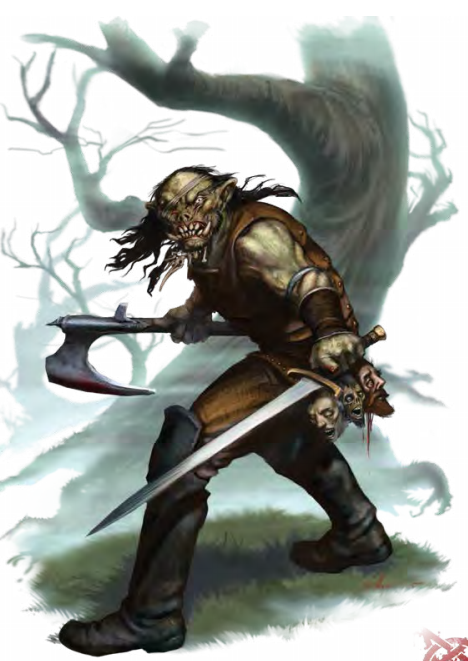
Ranger
Relentless hunters and trackers, rangers are another familiar Path, but unlike their D&D equivalents they get no magic spells and no animal companion. Those come later on. What rangers excel at is picking one enemy and hounding them to the ends of Urth without fail. They hunt down enemies and eliminate them, or track them over long distances.
Level 3 Ranger
You get your Attribute boosts, and a +8 to Health, which is the biggest in game, rivaled only by a Master Path later on. You add tracker to your professions, and you get Alertness, which means you can’t be surprised and get 1 boon to Perception rolls. You also get Hunt Prey, which lets you use an action to designate one enemy you can see as your prey. When you roll to track, find, or attack your prey you get 1 boon.
Level 6 Ranger
A smaller boost to Health, a +1 to Perception, and two new talents. Expert Guide gives you the ability to always know which way is north, and you can flawlessly retrace your steps. When traveling, everyone shares your Speed. Expert Tracker lets you make an Intellect challenge roll when you study animal tracks, and on a success you learn one true thing about the animal.
Level 9 Master Ranger
In addition to more Health you get Master Hunter, which prevents your prey from hiding from you and gives you an extra 1d6 damage when attacking them. Relentless Pursuit allows you to move up to half your speed when your prey moves.
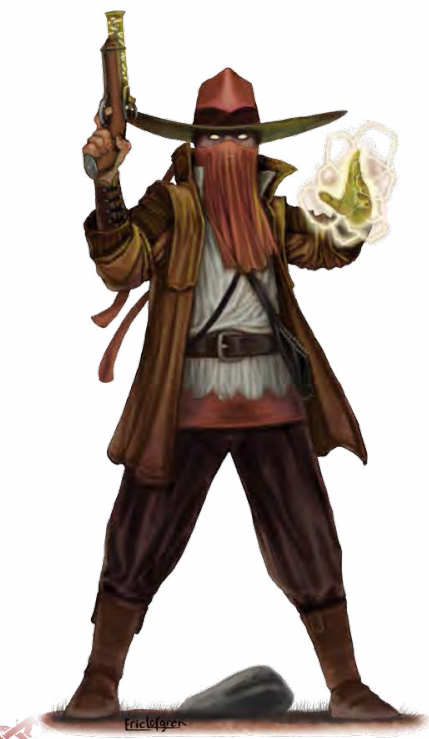
Spellbinder
Another great Path, the spellbinder is all about focusing magical power into a weapon, making it more reliable and invincible. Later on they can invest greater power into it and deal more damage with it. The practice was invented by the fae to deal with superior iron weapons, but the traditions of the spellbinder have carried on.
Level 3 Spellbinder
Attribute increase, more Health and a point of Power, and you can either discover a tradition or learn a spell. You also get Spellbound Weapon, a rank-0 spell that gives you 1 boon on attack rolls with the weapon, lets you cast spells through it, gives you the ability to teleport it to your hand from up to 1 mile away and you can instantly repair it, even if you only have a single fragment.
Level 6 Spellbinder
Health boost and either a new tradition or a spell. Your Spellbound Weapon can now be affected by Invest Power, which causes it to light up with eldritch fire and deal 1d6 extra damage for 1 minute, all for the cost of expending a rank-1 spell.
Level 9 Master Spellbinder
The customary Health and Power boost, another tradition or spell, and access to Magic Weapon, a straight buff to Spellbound Weapon that gives you another boon when attacking with it and makes it alway deal 1d6 extra damage.
And that’s it for the Expert Paths! I have a little criticism for the Warlock and Fighter, as the former doesn’t let you do enough with Spell Steal, and Fighter needs access to one more Fighter Talent. Other than that, the Expert Paths are really cool, and give you lots of directions to branch off in. But if you thought the Expert Paths had a lot of variety, just wait until you see the Master Paths!
...but let’s have a preview, shall we?
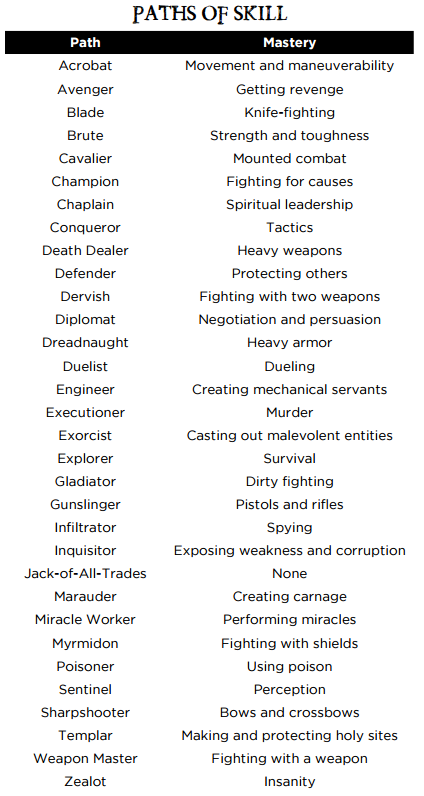
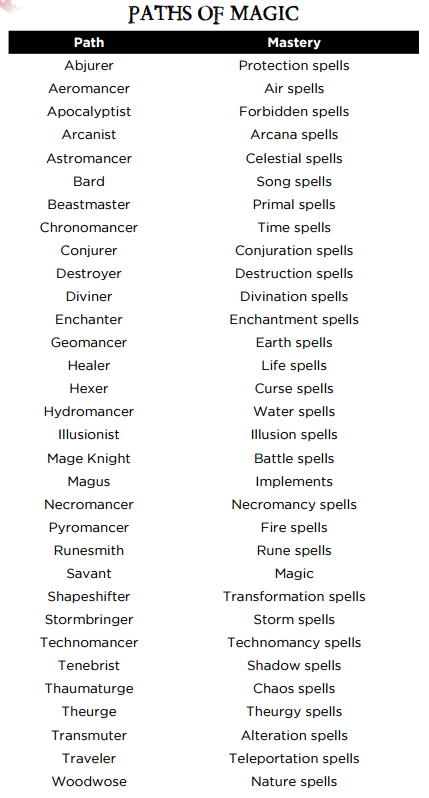
Also, this is the last call for votes on Queegol's Novice Path, and we need to get her an Expert Path too!
Next time: Spradley and Queegol Become Experts!
Spradley and Queegol level up!
Original SA post Shadow of the Demon Lord Part 9: Spradley and Queegol level up!Spradley has changed a little bit since we last saw them. They found an old sage who helped them understand the writing on the inside of their arm, which turned out to be an incantation for an ancient form of magic, one that could imbue Spradley’s weapon with arcane power. The discovery awakened a latent power in Spradley, one that seemed to have almost been waiting for this particular moment. Reciting the incantation filled Spradley with power, giving them the ability to use magic.
But that is not all there is to the writing. The incantation is just one portion of the message, which appears to have been left by Spradley’s creator. Filled with determination, Spradley decides to seek out their maker and discover why this power was sealed within them, and why the cryptic message implores them to seek out the reclusive engineer.
At level 2, Spradley picks up the normal Warrior kit, including +5 Health, Combat Prowess and Forceful Strike.
At level 3, Spradley’s magical potential is unlocked, and they pick up the Spellbinder Expert Path. Spradley gets an Attribute increase, putting +1 into Strength and Intellect, +3 Health, and 1 point of Power. Spradley discovers the Battle tradition, which replaces their normal Madness with Battle Madness and gives them access to a variety of spells. When discovering a tradition, you learn one rank-0 cantrip, and Spradley chooses Celerity, which allows them to move up to twice their Speed without triggering free attacks. They also get Spellbound Weapon, the core spell of the Spellbinder Path. Since their Power is 1, they get 2 castings of each rank-0 spell, and 1 casting of any rank-1 spells, but they don’t know any yet!
Spradley makes all attacks with their battleaxe with 1 boon thanks to Weapon Training, and they deal an extra 1d6 damage because of Combat Prowess. If they roll over a 20, they get another 1d6 damage on top of that with Forceful Strike. By casting Spellbound Weapon, which has a 4-hour duration, they get another boon to all attacks, the ability to teleport the weapon to their hand, and they can repair all damage to it. So assuming they’re rolling with Spellbound Weapon up, they roll attacks with 2 boons and deal at least 2d6 + 2 damage, with the possibility of doing another 1d6 on that, which becomes more likely due to rolling with 2 boons. They can sacrifice that capability to use special maneuvers to better control the battlefield, and give themself better odds by canceling out the boons with banes.
With a suit of scale armor, Spradley has a Defense of 16, with a +2 from their large shield, making them pretty hard to hit, and with 26 and a Healing Rate of 6, Spradley is beefy for a hybrid type character. They can hold their own on the front line of a fight, and will be able to acquire even more spellcasting capability later, focusing on the Battle tradition.
Spradley Sprocket, Level 3 Warrior/Spellbinder
Strength 13, Agility 8, Intellect 12, Will 8
Perception 9
Defense 18
Health 26
Healing Rate 6
Size 1, Speed 8, Power 1
Damage 0, Insanity 0, Corruption 0
Languages: Common (Literate)
Professions: Folklore, Religion, Mercenary
Immune to disease, poison, asleep and fatigued
Key
Mechanical Body
Repairing Damage
Catch Your Breath: use an action to heal Damage equal to Healing Rate 1/per rest.
Weapon Training: when attacking w/ weapon, take 1 boon.
Combat Prowess: weapon attacks deal 1d6 extra damage.
Forceful Strike: on attack roll of 20+, deal 1d6 extra damage
Spells: Spellbound Weapon (2), Celerity (2)
Gear: Battleaxe, large shield, basic clothing, backpack, 1 week of rations, waterskin, tinderbox, 2 torches and a pouch with 2 copper pennies.
Our old friend Queegol has undergone a life change since we last saw her. She’s fallen into a life of adventure and roguery after encountering a cult devoted the Demon Lord. Realizing that mere words will not be enough to help people, she has bent her wealth and skill towards that noble goal, and discovered skills that she didn’t even know she had. Knowing that she’ll never make a great fighter, and lacking faith in the gods, she’s turned to the crafty sorts her work brought her into contact with in order to develop her talents. She’s made friends with thieves and assassins and rogue mages of all stripes, learning how they ply their craft and incorporating their lessons into her own repertoire.
Now she works against the Demon Lord’s cultists from both sides of the law, pursuing them with words and reason where she can, but stalking them with blade and pistol in the night.
Queegol has taken up the Path of the Rogue, learning their particular mixture of luck and talent, and she has chosen to augment her capabilities with magic as well. As a level 1 Rogue, she gets to increase two Attributes by 1, and she chooses Agility and Intellect, focusing on her strengths. She gets +3 Health and chooses to learn High Archaic as a result of her conversations with magicians. She then gets Nimble Recovery, giving her a boost of healing and some mobility in fights, and Trickery, granting 1 boon on a single attack or challenge roll per round.
At level 2, Queegol gets Health +3, Exploit Opportunity, which gives her an extra turn when rolling over a 20, and a Roguery Talent. She chooses Magic, which increases her Power by 1, and lets her discover the Enchantment tradition and the spells Bewitch and Question. Bewitch lets her keep enemies off her back in combat and Question allows her to extract information from unwilling sources.
Queegol the Fang, Level 2 Rogue
Strength 8, Agility 13, Intellect 12, Will 8
Perception 11
Defense 14
Health 14
Healing Rate 2
Size ½, Speed 10, Power 1
Damage 0, Insanity 0, Corruption 0
Languages: Common (literate), Elvish and High Archaic
Professions: merchant, law
Immune to disease and charmed
Iron Vulnerability
Shadowsight
Sneaky
Nimble Recovery: spend an action to heal damage equal to Healing Rate and move up to half speed without triggering free attacks. 1/rest.
Trickery: one per round, make an attack or challenge roll w/ 1 boon. If using for an attack, the attack deals 1d6 extra damage.
Exploit Opportunity: if attack roll is above 20, take another turn before end of round. 1/round.
Roguery Talent: Magic (increase Power by 1 and make two choices: discover a tradition or learn a spell w/ each)
Spells: Bewitch (2), Question (1)
Equipment: rapier, pistol, soft leather armor, noble’s clothing, cloak, 1 week of rations, a waterskin, a healing potion, a pouch containing 11 silver shillings, a personal servant, a guard and a three horses with saddles.
Now that we’ve also covered the Expert Paths,
 what would you like to see Queegol take up for her next Path?
what would you like to see Queegol take up for her next Path? 
The Master Paths A - C
Original SA postHey folks, sorry for the long delay. Life has been hectic for a while, but I'm gonna be doing my best to get this review done because I really do love this game a lot.
Shadow of the Demon Lord Part 10: The Master Paths A - C
At level 7 you get to either pick a Master Path or a second Expert Path. Master Paths gain benefits at levels 7 and 10, and represent a deeper evolution or branching of your character’s talents and skills. You can again pick any Master Path you like, and there are no prerequisites for them.
Part of having a Master Path is picking a Quest. Your Quest is another story beat that you’d like to hit. It can be personal or it can be larger in scope, but it should be something very difficult to achieve and represent your character’s biggest step in taking control over the game world. The party as a whole might achieve bigger things, but this is how you will make your mark. Like with Objectives, you’re encouraged to think about Quests as a group and work together to complete your Quests and help each other achieve the pinnacle of achievement.
I’m not going to divide the Master Paths up into any themes this time around. Instead, I’ll be going over them in alphabetical order, as the book itself presents them.
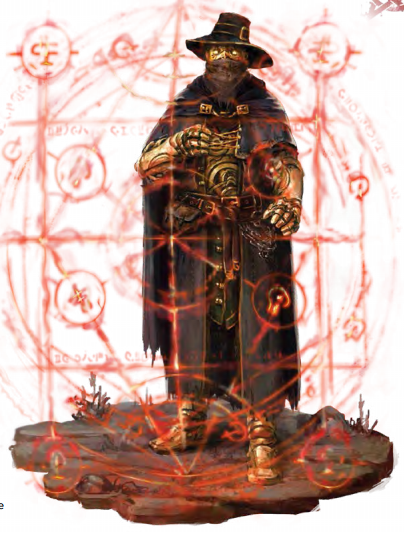
Abjurer
Specializing in Protection magic, the abjurer is a master of wards and shielding spells.
Level 7 Abjurer
All level 7 characters get +1 to three Attributes. The abjurer gets an increase in Health and another point of Power, they can speak another language or pick up another profession, and they either discover the Protection tradition or learn one Protection spell. When you cast a Protection spell, your Guarded Casting talent grants you a bonus to Defense equal to 1 + the rank of the spell you cast for 1 minute or until you use the talent again.
Level 10 Abjurer
A little more Health and an additional spell. You gain Warded, which means that all creatures attacking you take 1 bane, and you make challenge rolls to resist attacks with 1 boon.
quote:
Acrobat
This is the class to take if you gotta go fast. You become capable of wild stunts and superhuman feats of mobility and agility that no one else can match.
Level 7 Acrobat
Attribute increase, more Health a +2 to Speed, along with another language or profession. You gain Acrobatics, which grants you all the following bonuses.
You can move through spaces occupied by other creatures.
You move at full Speed across all forms of difficult terrain, including climbing and swimming.
You can stand up without using your move.
When you take damage after landing from a fall, you can use a triggered action to make an Agility challenge roll. On a success, you reduce the damage by the total of your roll, and if that reduces the damage to 0 you land on your feet.
Level 10 Acrobat
More Health and Mobility, which lets you move and take an action on a fast turn, and your movement in any turn never triggers free attacks.
Masters of the Air tradition, aeromancers are capable of casting powerful air spells that aid their allies and scourge their enemies.
Level 7 Aeromancer
Attribute increase, more Health, +2 Speed and +1 Power. You can speak another language or add a profession, and you either discover the Air tradition or learn another Air spell. You become capable of Air Walk, letting you fly after casting an Air spell for a number of yards equal to 1 + the rank of the spell.
Level 10 Aeromancer
A little more Health, another spell, and you just straight up become capable of Flight, all the time.
quote:
Apocalyptist
This Path is for those who pursue the Forbidden tradition of magic, dealing in magic that flows from the Void and the Demon Lord. They are usually evil as all hell, and their powers reflect the fear and destruction they can unleash.
Level 7 Apocalyptist
In addition to your Attribute increase you also get more Health and Corruption, as well as a point of Power. You can speak another language or get a profession, and you either discover the Forbidden tradition or learn one Forbidden spell. Fearsome Casting gives you the ability to, when casting a Forbidden spell, select one enemy and force them to pass a Will challenge roll or be frightened.
Level 10 Apocalyptist
Even more Health and Corruption, another spell and Hasten the Apocalypse, which is similar to the Sorcerer’s strain consequences, only it happens every time you cast a Forbidden spell and causes the world around you to sicken and die, dealing damage to people and objects.
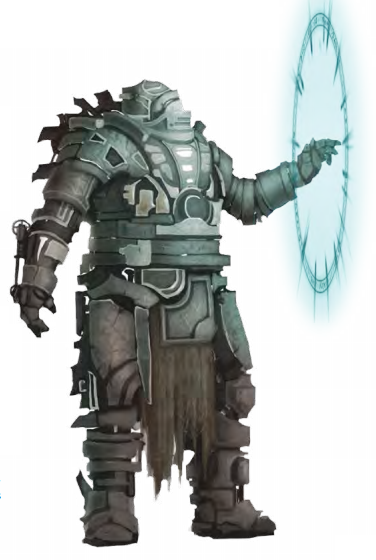
Arcanist
Deeper understanding of the Arcana tradition leads to deeper mastery over magic itself, and this Path allows greater versatility and flexibility in spellcasting.
Level 7 Arcanist
Attribute bump, a little Health and a point of Power. You get another language or another profession, and you either discover the Arcana tradition or learn one Arcana spell. Your flexibility comes from Arcana Mastery, which lets you expend the casting of an Arcana spell to instead cast any other spell you know of the same rank.
Level 10 Arcanist
More Health and another spell. You also get Reclaim Arcana, which allows you to roll a d6 when you cast an Arcana spell, getting the spell back on a 6, and Swift Arcana which lets you use triggered actions on your turn to cast Arcana spells.
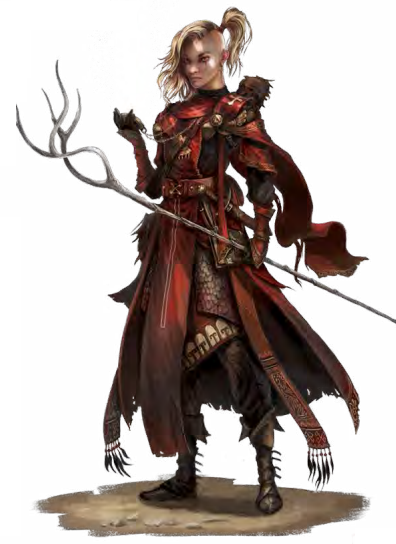
Astromancer
Mastering the Celestial tradition lets you call upon the light of the stars themselves, and astromancers learn to harness the power of light in all its forms.
Level 7 Astromancer
Standard Attribute increase, more Health and a Power bump, along with either a language or profession and you either discover the Celestial tradition or learn one Celestial spell. You can summon points of light when casting Celestial spells via the Inner Radiance talent, and Intense Light means your Celestial spells do 1d6 extra damage.
Level 10 Astromancer
More Health and another spell. Blinding Corona, which causes the point of light created by Inner Radiance to blind nearby enemies, and Power of the Sun, which gives you 1 boon to attack rolls on Celestial spells and imposes 1 bane on enemies resisting them.
Avenger
The Avenger is all about, you guessed it, taking vengeance. When someone is giving a friend of theirs a hard time, they’re capable of making life hell for that enemy, becoming scary combatants that are deadly efficient at focusing on one enemy at a time.
Level 7 Avenger
The standard +1 to three Attributes, along with a good chunk of Health and another language or profession. You then get your core ability, Vow of Vengeance, which allows you to mark an enemy who hurts you or another creature. This vow gives you 1 boon to all attacks against the marked target, as well as keeping them frightened when you’re around and allowing you to chase them down.
Level 10 Avenger
More Health and Avenger’s Wrath, which gives you a flat 1d6 extra damage when attacking your marked target.
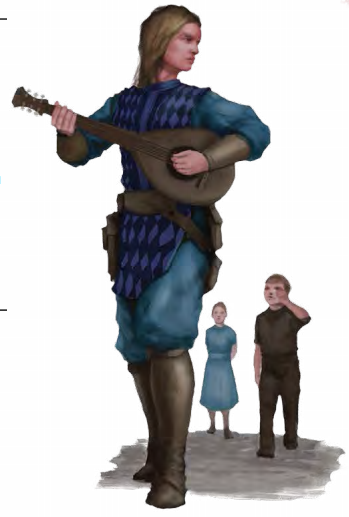
Bard
Far from being the basic class they are in most games, Bards are masters of the Song tradition, and their abilities augment their Song spells, allowing them to further enrapture those affected by their magic, while also growing their abilities as factotums.
Level 7 Bard
Attribute increase, more Health and a point of Power, plus you can speak another language or add the entertainer or musician profession. You either learn the Song tradition or learn a Song spell, and you get Esoteric Knowledge, which gives you a boon on all Intellect challenge rolls to recall useful information.
Level 10 Bard
Another spell and some Health, as well as Disarming Charm, which impairs people you have charmed. Additionally you learn Swift Song, which allows you to use triggered actions to cast Song spells.
Beastmaster
These guys use Primal magic to form permanent bonds with animals, using them as companions in all aspects of play. This is where you’d want to look if you want to play a classic D&D ranger or maybe a druid with a focus on animal friends.
Level 7 Beastmaster
With the Attribute increase your also get a little Health and +1 to Power, as well as either the Primal tradition or a Primal spell, and another language or a wilderness profession. You get Primal Beast, which enhances the Beast Within spell, and Primal Bond, which allows you to use the Befriend Animal spell to create permanent companion animals that get several bonuses. These include: allowing you to share spell effects with them, giving you a boon to Perception rolls when they’re near, and allowing you to communicate with them telepathically.
Level 10 Beastmaster
More Health and a spell, and Primal Power, which gives any animal you have charmed a boon to all attack rolls and flat 1d6 more damage with attacks.
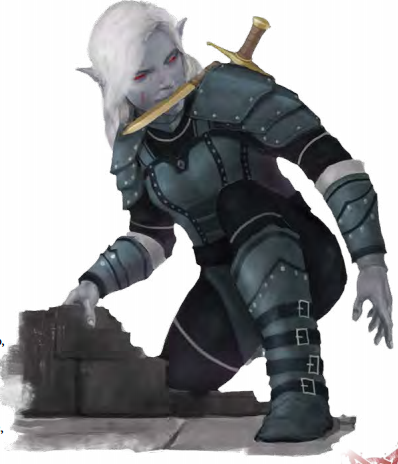
Blade
The equivalent of a bleed-focused build, the Blade revolves around cutting people with knives and making their blood come out. They do this better than other people with bladed weapons somehow, they don’t really go into specifics.
Level 7 Blade
You get your Attribute increase, more Health, and either another language or a profession. You also get Bleed, which is your core ability. When you roll over a 20 on an attack roll, the target starts to bleed, dealing 1d6 damage to them at the end of every round that they don’t use an action to stop the flow.
Level 10 Blade
A little Health and Swift Blade, allowing you to use triggered actions with your daggers or knives.
quote:
Brute
This is probably the simplest Path in the game. The Brute does two things, and it does them well: MEAT and SMASH. Take this Path if you want to basically be the Hulk.
Level 7 Brute
In addition to the standard Attribute boost, you get a huge increase in Health, +8, which is the largest in the game I believe. Also remember how you are probably making a lot of Strength attack and challenge rolls? Well Brawn means you now get a boon on all of them forever.
Level 10 Brute
Another +8 to Health, and Mighty Thews, which lets you add your Strength bonus to all Strength attack and challenge rolls. When you can get to a +5 Strength with some finagling, this is nothing to sneeze at.
For the person who loves mounts, the cavalier revolves around fighting from horseback. Or really the back of anything that can be ridden. Want to be a rhino rider or a chocobo knight? Go for it.
Level 7 Cavalier
Standard Attribute increase, a chunk of Health, and another language or a common, military or wilderness profession. You also get Combat Riding, which gives you a boon to attacks made while mounted.
Level 10 Cavalier
A little more Health and two abilities: Devastating Charge, which gives you 1d6 extra damage on attacks made as part of a charge, or 2d6 extra damage if that attack was made while mounted, and Master Rider, which gives you +2 to Defense and Speed while mounted.
quote:
Champion
This Path is about standing in one spot and fucking up anyone who comes close to you while resisting being fucked up in turn. There are several tanking Master Paths, and this one turns you into a badass turret of death.
Level 7 Champion
Attribute increase, a good bit of Health, and another language or profession. Battle Stance lets you use an action to plant yourself in place. As long as you don’t move or go unconscious, you get 1 boon to all attacks and creatures attacking you take 1 bane.
Level 10 Champion
Another Health boost, and you get Champion’s Resolve. This means that whenever you would be incapacitated you can make a Strength challenge roll. If you succeed, you heal Damage equal to your Healing Rate and for 1 round you get an extra 1d6 damage to all attacks.
This is your battle-priest. They sing, chant, scream or shout things to their allies that bolster them in combat, allowing you to boost the combat abilities of your friends in pretty significant ways.
Level 7 Chaplain
Attribute boost, a nice Health boost, and either a military or religious profession. You also get Battle Chant, which you can maintain on your turns, and gives your nearby allies a boon to all weapon attacks. You can use this three times per rest.
Level 10 Chaplain
More Health and Emboldening Chant, which gives your allies affected by Battle Chant an extra 1d6 damage, and Succor, a minor healing ability that expends Battle Chant uses.
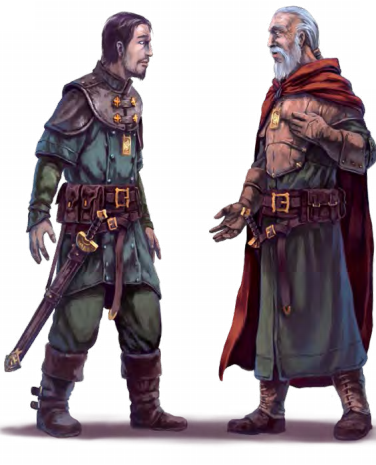
Chronomancer
Your standard time mage, all about using spells from the Time tradition and messing with the linear flow of time.
Level 7 Chronomancer
You get your Attribute increase, a little Health and a boost to Power, and either another language or a profession. You either discover the Time tradition or learn one Time spell, and get Quickening, which lets you move up to your Power when you cast a Time spell without triggering free attacks.
Level 10 Chronomancer
More Health and a new spell, and Precognition, which lets you use a triggered action when you cast a Time spell to gain an insight. You can spend the insight when you fail a roll to try again.
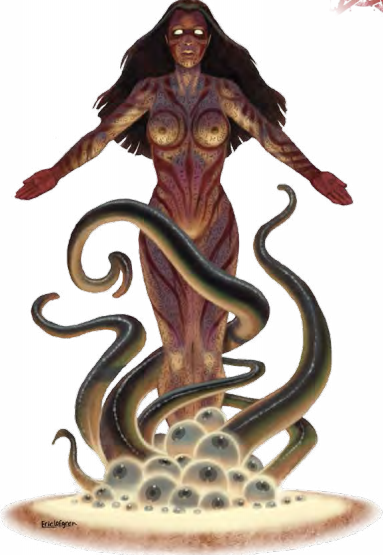
NWS for some nudity
Conjurer
If you like summoning monsters to help you out, this is the Path for you. It lets you get bonus monsters and makes your monsters deadlier.
Level 7 Conjurer
Besides your Attribute increase, bit of Health and Power and language/profession, you also get to discover the Conjuration tradition or learn one Conjuration spell. You get Conjure Tiny Monster, which lets you conjure a free tiny monster when you cast a rank 0 Conjuration spell. And you get Frightening Monsters, which gives all your conjured monsters the frightening trait.
Level 10 Conjurer
Another smidge of Health, and another spell, and Powerful Monsters, which gives all your conjured monsters a boon to all attacks and an extra 1d6 damage.
quote:
Conqueror
A stealthy way to get the 4E-style Warlord into the game, the conqueror centers around helping their allies to more damage and just overall be more effective in combat. Combine this with the Priest Novice Path and you have a good replacement for the warlord.
Level 7 Conqueror
You get your standard Attribute increase, a good chunk of Health, and either another language or a military profession. You get the talent Attack Command, which lets you grant an attack to a nearby ally, and Direct the Troops, which lets you give an ally the ability to move up to half their Speed.
Level 10 Conqueror
Health boost, and Battlefield Leadership. This means that when you get a success on an attack roll, you can give a nearby ally 1 boon on their next attack. Additionally, people affected by your Attack Command talent now deal an extra 1d6 damage on the granted attack.
Master Paths D-E
Original SA postHey folks, I know it's been a little while since our last update. Forgive me for that, I was having some technical difficulties. Anyways it's time for more...
Shadow of the Demon Lord Part 11: Master Paths D-E
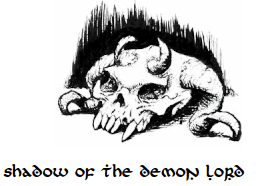
Death Dealer
When I read this Path’s description, I think of ultra greatsword characters from Dark Souls. You use heavy weapons, and you use them well. Big damn swords and axes, anything that uses two hands is in your wheelhouse.
Level 7 Death Dealer
Attribute increase and a big chunk of Health as well as Brutal Swing, which is the classic D&D cleave. When you incapacitate an enemy, you can make an attack against another enemy.
Level 10 Death Dealer
Besides another nice Health boost, you also get the awesomely-named Make Mountains of the Dead, which allows you to attack any number of creatures within reach. You don’t have to roll or anything, and if any of the enemies have less than 20 Health, they just straight up die.
quote:
Defender
Another tanking Path, the Defender is much more traditional than most of the others. Stand near your allies and protect them from the attacks of incoming enemies.
Level 7 Defender
Attribute increase and a big chunk of Health, as well as Defend, which lets you spend an action to protect people within reach. So long as they remain in reach, anyone attacking them takes 1 bane.
Level 10 Defender
One last Health boost, and Containing Strike, which lets you immobilize enemies that you hit, and Retributive Strike, which lets you hit enemies that hit your allies.
Dervish
If you want to wield two weapons and look cool while doing it, you want to be a dervish. The penalties to dual-wielding in SotDL are pretty steep, but if you take this Path you basically become the magic bullet of fighters.
Level 7 Dervish
You get the standard Attribute increase, a solid chunk of Health, and either another language or a profession. You get Ambidexterity, which lets you wield one-handed weapons as off-handed weapons, and Off-Hand Parry, which gives you a +1 to Defense for using a non-shield weapon in one of your hands.
Level 10 Dervish
More Health, and Two Weapon Mastery, allowing you to get 1 boon when attacking with two weapons. If you attack one target with both weapons you also deal 1d6 extra damage.
quote:
Destroyer
Take this Path if you want to use Destruction magic, which is all about blowing shit up and mangling people, to blow shit up even harder and utterly annihilate people.
Level 7 Destroyer
Attribute increase, a little more Health and +1 Power, and you either learn the Destruction tradition or learn a new Destruction spell. You get Destruction Unleashed, which turns you into a minor Sorcerer, allowing you to offload the self-damage from Destruction spells into localized blasts that damage friend and foe alike.
Level 10 Destroyer
A little bit of Health, another spell and Utter Destruction, which allows you to treat any 1s you roll on damage dice as 6s.
Every group has one player who wants to try and talk their way out of anything. The diplomat lets you do just that. They get bonuses to social combat rolls and can turn foes into friends.
Level 7 Diplomat
You start off with your standard Attribute increase, a little bit of Health, and either a profession or a language. Then, you get Master of Diplomacy, which gives you a boon in social settings to all Intellect and Will attack rolls. Stay the Hand is your other core ability, which lets you make a Will attack roll against an enemy’s will after they hit you. On a success you can either cause their attack to miss you or charm them for 1 minute.
Level 10 Diplomat
A little Health, and Soothing Words, which lets you clear status effects from nearby creatures, and Unexpected Alliances, which upgrades the charm from Stay the Hand to compelled.
quote:
Diviner
This is the class for people who want to be prepared for anything and mess with their enemies through foresight and preparation. It is the RPG equivalent of playing a blue deck in Magic.
Level 7 Diviner
Standard Attribute increase, a boost to Defense (!!!), Health and Power, another language or profession and you either discover the Divination tradition or learn one Divination Spell. Omens is your basic ability, and it allows you to expend a Divination spell when making an attack or challenge roll to get a number of boons on the roll equal to the rank of the spell expended.
Level 10 Diviner
A sliver of Health and a new spell. You then get Premonitions, which gives you three rolls after every rest. You record the results of these d20 rolls. When a creature makes an attack or challenge roll within sight, you can replace their roll with one of the rolls you made, and then cross that number off the list. So long as you have at least one unspent premonition, you can’t be surprised, enemies attacking you take 1 bane, and you get 1 boon to all challenge rolls to resist attacks.
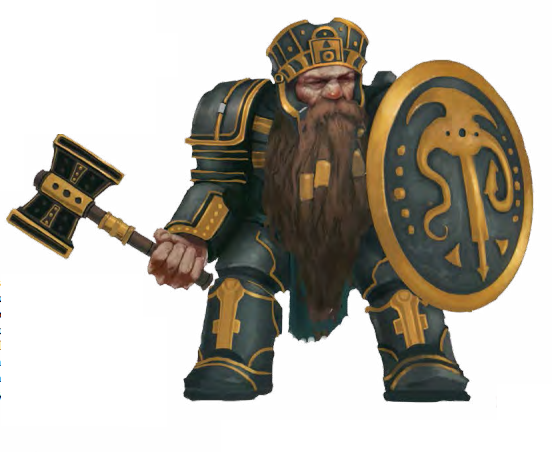
Dreadnaught
Do you want to be invincible? Well, you can’t, but being a dreadnaught is as close to that as you can get in SotDL. They wear the heaviest armor and absorb nasty hits like it was nothing while never giving an inch.
Level 7 Dreadnaught
Increase your three Attributes and gain a solid chunk of Health. You get either a language or a military profession. Iron Clad lets you ignore the requirements for heavy armor and gives you a +1 to Defense while wearing heavy armor. Immovable means that while you’re awake the only way you can be moved is if you want to be moved.
Level 10 Dreadnaught
Another chunk of Health and Weapon Resistance, which means that while you’re wearing heavy armor you take half damage from weapons. Essentially, if you’re fighting humanoid enemies with swords, axes, guns etc. you have an absolutely massive advantage.
quote:
Duelist
This Path is all about fighting enemies one on one. If you enjoyed the Avenger from D&D 4th Edition, then this will let you do a lot of the same things. Your focus is on locking down one enemy, getting its attention on you and then destroying it.
Level 7 Duelist
Standard Attribute increase, some Health, and either another language or profession. You get Challenge, which lets you make an Intellect attack roll against the enemy’s Will. If you succeed, that creature takes 1 bane to all attacks that don’t include you. Riposte is a reactive ability that forces a challenged target to take 1 bane when attacking you. If they fail, you can immediately counterattack them,
Level 10 Duelist
More Health and Duel Mastery, which gives you an extra 1d6 damage to all attacks to your challenged target.
If you like to charm enemies and protect your allies from charms and other mental status effects, the enchanter is the way to go.
Level 7 Enchanter
Attribute increase, a bit of Health and +1 Power along with a language or profession. You either discover the Enchantment tradition or learn an Enchantment spell. You get Enchantment Defense, which lets you remove mental status effects from yourself with an Intellect challenge roll and Subtle Charm, which prevents enemies you have charmed from remembering that you charmed them.
Level 10 Enchanter
A little more Health and a spell. Countercharm lets you make an Intellect challenge roll when a creature within sight becomes charmed, and on a success the effect is removed. Persistent Enchantment doubles the duration of all your Enchantment spells.
quote:
Engineer
Okay, this is my favorite Path purely for how bugfuck crazy it is compared to all the others. The Engineer is about having a robot buddy who does all the heavy lifting for you… and it goes a little deeper than that.
Level 7 Engineer
You get your standard Attribute increase, a little Health, and either another language or an academic profession. Eidolon is your core trait, which gives you a personal construct, 12 feet tall and 2000 pounds. You can only have one eidolon and have to build a new one if it is destroyed. There is a statblock attached, and the eidolon is no joke.
Level 10 Engineer
You get a little more Health and Mighty Eidolon, which increases your eidolon’s Health by 25 and its Defense by 2. And Cockpit, which lets you install a cockpit in your eidolon and pilot it around as a literal goddamn mecha. Fans of Mechwarrior and Gundam rejoice, Robert Schwalb has your back.
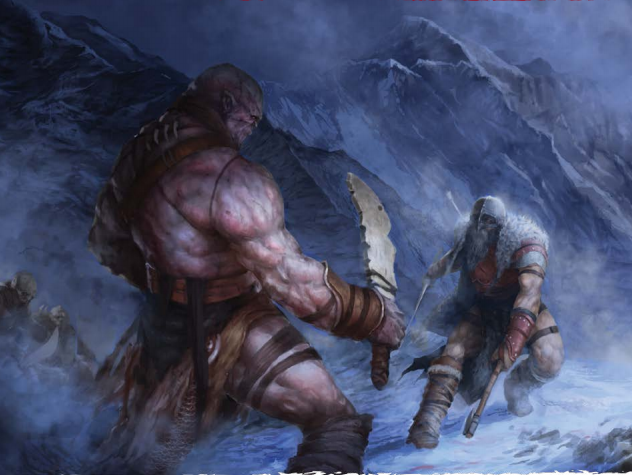
Executioner
The name for this Path is pretty apt, as it does exactly what it says. If you’re looking for ways to instantly kill or severely damage your foes and end fights quickly, then the executioner will give you what you need.
Level 7 Executioner
Standard Attribute increase, a little Health, and either another language or profession. You get Execute, which means that once per round, you can make an attack with 1 boon that deals 1d6 extra damage. If the attack injures the target (brings them up to damage equal to half their Health), they have to make a Strength challenge roll. If they fail, they are insta-killed.
Level 10 Executioner
A bit more Health and the Exacting Strike ability, which lets you use a triggered action on a successful attack to deal maximum damage.
quote:
Exorcist
Do you hate those filthyxenosmonsters? Then the exorcist might be for you. This Path has a few tools for dealing with supernatural creatures and becomes hardier against their tricks.
Level 7 Exorcist
You get the Attribute increase, a good bit of Health and a point of Power along with either a language or a religious profession. You also learn the exorcism spell, which is a rank 1 attack spell that lets you end a few mental status effects and cast out possessing spirits and daze them.
Level 10 Exorcist
More Health and Purge the Unclean, which gives you 1 boon against certain types of supernatural monsters and imposes 1 bane on their challenge rolls to resist your attacks. Also you get Will of Iron, which makes you immune to charmed, compelled and frightened, and gives you 1 boon to rolls to resist gaining insanity.
Do you want to boldly go where no one has gone before? Push yourself the limit and discover hidden secrets? Expand your senses and surprise people with your perserverence? Look no further than the exorcist for all that.
Level 7 Explorer
Besides the traditional Attribute increase you also get more Health, +1 to Perception and +2 to Speed. You also get another language or a wilderness profession. Preternatural Senses gives you 1 boon to all Perception rolls, while Perseverance lets you make a Strength challenge roll to remove a few different status effects from yourself. Respite lets you take a 1 hour rest with your allies, and at the end of it, everyone heals damage equal to your Healing Rate.
Level 10 Explorer
More Health and Driven, which means that any time you roll a 5 or less, you can roll another d20 and add that to the result. Still pretty swingy and you’ve only got a 20% chance of it triggering, but when it does there’s a good chance it will turn things around.
Next time: more Master Paths!
Master Paths G - Po
Original SA post
Shadow of the Demon Lord Part 12: Master Paths G - Po
Geomancer
This Path is all about the use and manipulation of the earth. It provides you with some toughness that magic-users are generally lacking, and gives access to a few other tricks that involve the natural world.
Level 7 Geomancer
You get your standard Attribute increase, a decent amount of Health and a point of Power. You discover the Earth tradition or learn an Earth spell. You get Earthen Defense, which lets you spend an Earth spell of Rank 1 or higher, and for each Rank the spell has, you roll a d6. This total becomes your Earthen Defense pool, which is a buffer of extra hit points that takes damage before you do.
Level 10 Geomancer
You get another chunk of Health, another spell, and Earth Walker, letting you ignore difficult terrain on natural surfaces and letting you move through solid stone and dirt.
quote:
Gladiator
If you want to fight dirty and trust your fate to luck, the gladiator is the Path for you.
Level 7 Gladiator
Standard Attribute increase, a chunk of Health and either another language or a martial profession. Dirty Fighting lets you make an Agility attack against an enemy’s Perception. If you succeed they become Impaired for 1 round. Win at Any Cost means Impaired enemies take 1d6 extra damage from your attacks.
Level 10 Gladiator
Another bit of Health and you get Finishing Blow, a very useful ability that gives you 1 boon against an enemy suffering any affliction, and gives you 1d6 extra damage against those targets. Overall when all your talents line up you’re getting 2d6 damage and 1 boon against enemies you afflict with Impaired, and if you have a party member who can also dole out afflictions the gladiator becomes a nasty and deadly combatant.
Gunslinger
This Path lets you inject a little western into your dark fantasy. You can make your own guns and use them like no one else can. The book does say that it makes more sense for technically-minded characters to pursue the art of gunslinging, but anyone can get into it.
Level 7 Gunslinger
You have your Attribute increase, a little Health and either another language or a profession. You also get Six-Shooter, letting you transform a pistol into a revolver. You can fire a six-shooter six times before needing to reload it, and anyone besides you attempting to use it takes 3 banes to the attack.
Level 10 Gunslinger
Another bit of Health and two abilities: Deadeye Shot, which gives you 1 boon and an extra 1d6 damage on attacks with pistols or six-shooters, and Speed Loader, which lets you reload a gun as a minor action rather than an action.
quote:
Healer
It may not sound interesting or glamorous, but what they don’t tell you about the healer Path is that not only does it make you damn good at healing, it also turns you into a nigh-unstoppable Terminator. Read on to find out how.
Level 7 Healer
Here you get your Attribute increase, some Health and +1 to Power, as well as either the Life tradition or a Life spell. Far Healing lets you extend the range of a Life spell with a range of Reach to a range of Short.
Level 10 Healer
More Health and another spell. Empowered Healing means that anyone you cast a Life spell on heals extra damage equal to their Healing Rate while Unassailable Vitality means that you cannot take damage from a disease or poison, you can’t become diseased or poisoned and you heal all damage when you complete a rest. That’s right, so long as you don’t take damage equal to your Health and can take a nap, you wake up good as new. For you, the old saying “any fight you walk away from is a fight you won” is true.
Hexer
The Curse tradition is the Hexer’s stock in trade. Curse spells are very good at debilitating your foes, and the Hexer just enhances that. The abilities of this Path combine nicely with Curse magic, and allows you to make life hell for your enemies.
Level 7 Hexer
Standard Attribute increase, as well as a little bit of Health and +1 to Power. You get another language or a profession, and you either discover the Curse tradition or learn one new Curse spell. Evil Eye is you core ability, which lets you use a triggered action when hitting an enemy with a Curse spell to apply one of three effects. Desire charms the enemy, Lethargy slows them, and Pain deals 2d6 damage to them.
Level 10 Hexer
Another bit of Health and a spell, and Exacting Curse, which makes targets cursed by you take 1d6 extra damage from your attacks.
quote:
Hydromancer
The Hydromancer’s deal should be pretty obvious. They’re all about the Water tradition, and their abilities make them harder to deal with for most enemies, while at the same time empowering them with the ability to be like their chosen element in some interesting ways.
Level 7 Hydromancer
You get your standard Attribute increase, as well as some Health and a point of Power. You discover the Water tradition or learn one Water spell. You gain the Flow ability, which lets you cover yourself in water after casting a Water spell. While this is active, you cannot be grabbed or immobilized, and you can move through spaces occupied by creatures, and it lasts for as many rounds as the spell’s rank. You also get Swimmer, meaning you ignore the effects of difficult terrain while you are swimming.
Level 10 Hydromancer
A little bit of Health and another Spell, as well as your showstopper ability: Watery Form. This lets you expend the casting of a Water spell to take on a liquid form, which lasts for a number of rounds equal to your Power plus the rank of the spell. While in this form you get the following benefits:
- You get 1 boon to all Agility rolls
- You can squeeze through any space that will allow water through
- You take half damage from weapons
- You cannot be grabbed, immobilized, knocked prone or slowed
- You are invisible while submerged in water
Illusionist
If you think this Path is all about illusions… well, you’re not wrong. It does what it says on the box, and perhaps not in the way you’d expect. I find this to be one of the more niche Paths, even though it has a nice mix of abilities.
Level 7 Illusionist
You get your Attribute bump, a smidge of Health and a point of Power along with another language or profession and you can discover the Illusion tradition or learn one Illusion spell. Convincing Illusions imposes a penalty of 2 banes on anyone trying to discern your illusions, and gives you 1 boon when attacking with illusion spells.
Level 10 Illusionist
A little bit of Health, another spell, and Illusory Duplicates. When are damaged by an attack you can roll a d6. On a roll of 6, reduce the damage to 0 and teleport to a nearby open space. This is an ability that I like a lot, as it gives you that feeling of being always prepared from time to time.
quote:
Infiltrator
Do you want to be the best spy that ever lived? Want to be able to hide in plain sight, and then leap into the fray and destroy your enemies lightning-fast? Then this is the Path for you.
Level 7 Infiltrator
You get your standard Attribute increase, along with a +1 to Perception and a minor boost to Health, and either another language or a criminal profession. You core ability is the incredibly powerful Faceless, which gives you a whole host of benefits. Firstly, you can hide anywhere, anytime. Even if you’re in plain sight and being observed, you can hide. Once you use an action to break this stealth, you can’t activate it again for 1 minute. While hidden, people you talk to can’t remember details about you after 1 minute, and after an hour they will forget the conversation entirely. During the first round of any combat you begin hidden, you get 1 boon to all rolls, and if you take a fast turn you can both use an action and move. This is probably one of the coolest abilities in the game and makes the Infiltrator seriously badass.
Level 10 Infiltrator
You get a little more Health, as well as Treacherous Strike, which gives you 1d6 extra damage to surprised targets and targets from which you are hidden. You also get Vanish, letting you trigger Faceless any time you become obscured in any way, letting you reactivate it fast if you have a way to hide for a moment.
Inquisitor
One of the more meaty and flavorful Paths, the Inquisitor is all about being scary and mean, and it is very effective at doing those two things. It has some of the better debuffs outside of magic, and has one very… unique ability that I’m not sure I like.
Level 7 Inquisitor
You get your Attribute boost and some Health, as well as another language or profession. You get Dreadful Threat, which lets you make an Intellect attack against a creature’s Will, and if you succeed they become frightened while they can see you until either they damage you or they complete a rest. Master Torturer does just what you think it does. While torturing people, you can make an Intellect vs. Will attack roll, and if you succeed the creature will have to answer 1d6 questions truthfully. Finally Scrutiny is your core ability, and lets you make a Perception vs. Intellect roll to make a creature the subject of your Scrutiny, meaning that you can tell when it deliberately tells a lie and your attack rolls against them receive 1 boon.
Level 10 Inquisitor
You get more Health and Inquisitor’s Judgment, giving your weapon attacks against the target of your scrutiny an extra 1d6 damage.
quote:
Jack-of-All-Trades
A Path meant for people who want to do a little bit of everything. It’s a real master of none situation too where you’re not explicitly good at anything but you are versatile and capable of rapidly adapting to situations. You’ve also got ways to come through in tight situations when it really counts. I wouldn’t recommend taking this Path unless you’ve taken as least one magic-oriented Path before, as one of its core abilities needs you to have a little Power.
Level 7 Jack-of-All-Trades
You get your standard Attribute increase, a little bit of Health, and you can speak another language and add another profession. Your core ability is Aptitude, which gives you a pool of Aptitude points equal to your group level. When you make an attack or challenge roll, you can spend 1 point of Aptitude to make the attack with 2 boons. When you roll two 6s on one roll of the boon dice you regain a point of Aptitude and you refresh your entire pool when you complete a rest. Flexible Profession lets you make an Intellect challenge roll to act as though you had a profession you don’t already have. Magical Epiphany lets you copy rank 0 spells that you see cast, but these copies only last until you complete a rest and you only get a number equal to your Power, so you’ll need a little bit of that to make this talent fully functional.
Level 10 Jack-of-All-Trades
Another little bit of Health, as well as Prodigy, which allows you to increase one of your Attributes by 1 when you complete a rest (it ends when you use it again) and Uncommon Ability, which lets you treat 1s on boon rolls as 3s and 6s on bane rolls as 3s.
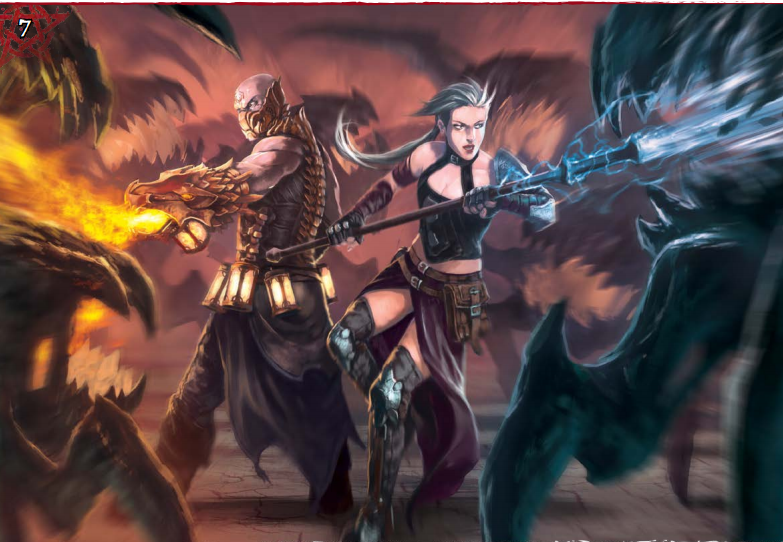
Mage Knight
This the the Path of the Battle tradition. It is a simple and straightforward path that emphasizes using attack spells, buffs, and regular attacks in tandem. This is actually a great Path to dip into at the tail end of a fighter’s progression, as even the low-level Battle spells can add a lot to a high-level character.
Level 7 Mage Knight
Standard Attribute increase, more Health and a point of Power, and either another language or a military profession. You either discover the Battle tradition or learn one Battle spell, and Escalating Violence gives you 1 boon to attack rolls with a weapon after you cast a spell. This lasts for 1 round.
Level 10 Mage Knight
A little Health, another spell, and Mage Knight Tactics, which lets you use a triggered action to attack with a weapon at any point in a round after you cast an attack spell.
quote:
Magus
What’s the iconic wizard weapon? Did you answer wands? Get that Harry Potter shit out of here, Shadow of the Demon Lord knows what’s up. This Path is all about the staff and how it rules. For a magus, the staff isn’t just a weapon or an implement, it is a personal effect that grants them a straight-up set of advantages that help them overcome their enemies.
Level 7 Magus
Here you get your Attribute increase, as well as more Health and a point of Power. You also get either another language or an academic profession. You discover a tradition or learn another spell, and you get your Staff of Magic. This item is special to you and gives all attack spells cast through it 1 boon and grants them 1d6 extra damage.
Level 10 Magus
More Health, another tradition or spell, and now you get Staff of Power, which grants you the following boosts: you get +1 to Defense, and attack spells cast through it are cast with 1 boon and impose 1 bane on any attempts to resist them.
Marauder
Another flavor of barbarian or berserker, the marauder focuses on mobility through charging. You get bonuses to charging and extra opportunities to charge. Take this Path if you want to dash around the battlefield like a ping-pong ball of murder.
Level 7 Marauder
You get you Attribute increase, as well as a nice bonus to Health and +2 to Speed. Powerful Charge means you no longer trigger free attacks when charging and you deal 1d6 extra damage on an attack made while Charging.
Level 10 Marauder
Another boost to Health. Bloodthirst lets you use a triggered action to charge anytime a creature becomes incapacitated from one of your attacks. Strength from Pain allows you to take 1 boon when making Strength attack and challenge rolls while injured.
quote:
Miracle Worker
More than a cleric or a paladin, the Miracle Worker embodies their god as a living representation. They can invoke their divine power to take on their god’s appearance and strike fear into the hearts of their enemies. This is another Path that doesn’t offer any Power but works better if you already have a little going in.
Level 7 Miracle Worker
You get your standard Attribute increase as well as a big chunk of Health. Stigmata is your core ability, and it allows you to take on the appearance of your god by taking 1 Insanity and a -5 penalty to Health for the duration, which is a number of minutes equal to 1 + your Power. While in this form, creatures who are not on your side that see you have to pass a Will challenge roll or be frightened until you end the effect. Also while this effect is active you make attack and challenge rolls with 1 boon and your heal 1d6 damage at the end of every round. Tongues is your other ability, and it allows you to communicate with any creatures who understand language. And when you choose to speak in a booming voice you can be heard up to 1 mile away.
Level 10 Miracle Worker
Another big chunk of Health, and the Worker of Miracles ability. When you use this, you can touch a creature and take a -5 penalty to Health until they complete a rest. That creature can then choose from a list of effects, which let it heal damage, cure afflictions, remove curses, or even remove insanity.
Myrmidon
I would like to say this Path allows you to be Captain America, but that would be misleading. This Path does make you pretty badass with a shield, but you’re not gonna be throwing it at Nazis and bouncing it off of walls any time soon. Still, if you want to be a tank and protect yourself from damage, the Myrmidon is an excellent Path for that.
Level 7 Myrmidon
Attribute increase and a boost to your Health and either a language or a military profession. Forceful Shield lets you move targets back when you hit them with your shield and Shield Block lets you use a triggered action to impose 1 bane on an enemy trying to hit you while you have a shield.
Level 10 Myrmidon
Another chunk of Health and Shield Mastery, which gives you +1 to Defense while you have a shield and when attacking with a shield you get 1 boon, 1d6 extra damage, and you do not lose the shield’s defensive property.
quote:
Necromancer
Not exactly the most heroic Path, the Necromancer isn’t overpowered and doesn’t grant you armies of undead creatures. Depending on how undead-heavy the campaign it this Path varies in strength and usefulness but it is always a strong choice based on how good some of its talents are even without a lot of undead to command.
Level 7 Necromancer
You get your Attribute increase, a smidge of Health and +1 to Power. You can speak another language or add an academic profession. You either discover the Necromancy tradition or learn a Necromancy spell. Inured to Death means that you no longer take damage from disease or poison and you can no longer become diseased or poisoned. And when making fate rolls while incapacitated you roll twice and use the result you prefer. You gain the Command Undead spell, which lets you make an Intellect vs. Will attack to control a single undead target for 1 minute.
Level 10 Necromancer
A bit of Health, a spell, and Master of Undeath, which doubles the amount of creatures you can effect with Command Undead (to 2) and any undead creatures you create get 1 boon to attack rolls and deal 1d6 extra damage.

Poisoner
Do I really need to explain what this Path does? You poison people. Pretty cut and dry honestly.
Level 7 Poisoner
You get the standard Attribute increase along with a little Health and either another language or a profession. Poison Mastery lets you use an alchemist’s kit and 5cp worth of ingredients to make a dose of poison. When creatures are poisoned by you, they make Strength challenge rolls to resist with 3 banes and take 3d6 extra damage from them.
Level 10 Poisoner
You get a little bit of Health and the ability Poisonous Touch. This allows you to use an action or triggered action to attack a creature with a needle hidden in a ring or in your finger. You can make a Strength/Agility roll vs. Agility, and if you succeed they take 1 damage plus 2d6 extra damage from the poison. They then make a Strength challenge roll to resist, and if they fail they are poisoned for 1 minute, which makes them dazed and slowed. If they’re already poisoned, they take 3d6 extra damage At the end of each round a poisoned creature must make a Strength challenge roll, and on a failure they take 1d6 damage.
Master Paths Completed!
Original SA post
Shadow of the Demon Lord Part 13: Master Paths Completed!
I'm back and here to finish off the Master Paths in Shadow of the Demon Lord. Without any further ado, let's jump right in:
Pyromancer
This is the Path to take if you’re really into the Fire tradition, and just want to burn shit up. It can make you into a low-rent version of The Fury, and really what more do you want?
Level 7 Pyromancer
Standard Attribute increase, as well as a little bit of Health and +1 Power. You also get either another language or a profession, and you either discover the Fire tradition or learn 1 Fire spell. Flame Blessing just makes it so that you flat take half damage from fire across the board.
Level 10 Pyromancer
More Health and another spell, and Immolating Flames, which forces any creature that is hit by one of your Fire spells to make an Agility challenge roll. If they fail, they catch on fire, which is 1d6 damage per turn.
quote:
Runesmith
This one is a little barebones. It enables you to buff yourself while using Rune magic, but… that’s all it does. I can’t say I would recommend it, and it could use a little love in a future Paths of supplement.
Level 7 Runesmith
You get your Attribute bump, as well as a little Health and a point of Power and either another language or a profession. You discover the Rune tradition or learn one Rune spell. You get Sigils of Power, which lets you buff weapons/armor for 1 minute, giving you 1d6 extra damage with weapons and +1d3 Defense with armor after casting a Rune spell.
Level 10 Runesmith
More Health and another spell, and Sigils of Power just bumps up from 1 minute to 1 hour in duration. That’s it. Like I said, the Path is a little barebones.
Savant
If you’ve been reading along and thinking “spellcasters don’t get that many spells”, then this is the Path for you. The Savant trades off raw magical power for a deeper understanding of spells, getting more spells than any other Path. If you don’t mind being restricted to lower-tier spells and having fewer castings, but you want a bigger magical toolbox, the Savant is worth a look.
Level 7 Savant
Attribute increase, as well as a little Health and either another language or a profession. You then get 2 picks, and you can use them to either discover a new tradition or learn another spell. You also get Tradition Focus, which lets you pick two Traditions you’ve already discovered; when you attack with spells from those Traditions, you get 1 boon, and creatures roll to resist them with 1 bane.
Level 10 Savant
You get a little boost to Health and you learn 2 more spells from the Traditions you picked with Tradition Focus.
quote:
Sentinel
This is a bit of an oddball Path. It focuses on edge case abilities, like not being surprised and defeating invisibility, and the capstone talent is all about creating a zone that makes you better at fighting (sort of). It’s a Path that I think could use to reworking to give it a stronger focus or at least buff its abilities to make you want to take it.
Level 7 Sentinel
Standard Attribute increase, along with +1 to Perception and a good chunk of Health. Perfect Awareness is your big talent, which prevents you from ever being stunned or surprised, gives you 1 boon to all Perception rolls, and lets you faintly see invisible creatures, letting you treat them as if they were only partially obscured.
Level 10 Sentinel
More Health, and Stand Guard. This is a big talent that lets you create a 5-yard zone centered on you that lasts until you use the talent again or you become unconscious. While in the zone, you get all of the following:
- 1 boon to attack rolls
- You know the location of all creatures in the zone and they cannot be hidden from you
- You cannot be charmed, compelled, frightened, surprised or put to sleep by magic
- You cannot be moved out of the area
Shapeshifter
This Path specializes in Transformation magic, and is focused around the idea of letting you transform into other forms with more benefits and transform faster and more often. Also, this was a huge missed opportunity to call the Path
Level 7 Shapeshifter
You get your standard Attribute increase, along with a little more Health and a point of Power. You can learn another language or a profession and you either discover the Transformation tradition or learn 1 Transformation spell. You gain Superior Transformation, which grants you one of the following bonuses when you transform yourself:
- +1 to Defense
- +2 to Speed
- +4 to Perception
- +5 to Health
You get a smidge of Health and another spell, along with Swift Transformation, which lets you spend triggered actions to cast Transformation spells.
quote:
Sharpshooter
Remember how the Pyromancer lets you be The Fury? Well the Sharpshooter allows you to play a passable version of The End. This Path lets you be the baddest of asses with ranged weapons, whether that is a bow or a gun, and before long you’ll be pulling off Hawkeye-esque shit where you never miss. Ever.
Level 7 Sharpshooter
Attribute increase, +1 to Perception and some Health plus the choice between another language or a profession. Deadly Aim lets you take an action to make a Perception attack against a creature’s Agility. If you hit, for the next round, when you attack that creature with a ranged weapon you do so with 3 boons and if you hit you deal 3d6 extra damage. So every other turn you get a very powerful attack, provided that you can hit that Perception attack.
Level 10 Sharpshooter
More Health and Perfect Shot, which allows you to spend a triggered action when you miss with a ranged weapon to turn that miss into a hit.
Stormbringer
This Path is all about bringing the pain with Storm magic and fucking people up by feeding off of electricity. It gives you boosts to mobility and your defenses as well. Overall, if you want to zip around the battlefield throwing lightning bolts and eating electricity, this Path is great.
Level 7 Stormbringer
You get you Attribute increase, more Health, a point of Power and +2 to Speed, as well as another language or profession. You either discover the Storm tradition or learn 1 Storm spell, and you get Ride the Lightning, which grants you the ability to, after casting a Storm spell, spend a triggered action to fly your Speed.
Level 10 Stormbringer
More Health and another spell, as well as Powered by the Storm, which means that whenever you would take damage from lightning or thunder, you reduce that damage to 0 and gain a +5 bonus to Health for 1 minute (which is cumulative). Also, while affected by the talent, you get 1 boon when attacking with Storm spells, and creatures resisting you take 1 bane.
quote:
Technomancer
For as cool as the Technomancy tradition is, the Technomancer is a little underwhelming. It doesn’t do anything particularly well and lacks the synergy of some other Master Paths, but it has flavorful abilities that fit with the theme and scope of Technomancy.
Level 7 Technomancer
You get your Attribute increase, as well as a little bit of Health and a point of Power. You choose between another language or a profession and you either discover the Technomancy tradition or learn one Technomancy spell. When you cast a Technomancy spell, your Inventionability lets you generate a small technomagical device in one hand that lasts until you expend it or until you complete a rest. When making an attack or challenge roll you can expend the device to make the roll with 1 boon.
Level 10 Technomancer
You get more Health, another spell, and you learn the rank-1 spell animate object, which does just what you think it does. Overall, not a great mix of abilities, but if you really want to play a techno-mage, this is the way to go.
Templar
This reminds me of the Sentinel, as it is another Path focused around creating a zone to kick ass in. I think that it needs a little more to finish it out, as the abilities are nice and flavorful, but it just needs a little more bang to really get people’s attention.
Level 7 Templar
Standard Attribute bump, +1 to Perception and a nice chunk of Health supplemented by either a language or a religious profession and you get Temple of Faith, which teaches you the temple of faith spell. When you lay down the temple of faith, it affects a radius 5 yards around you and lasting for 1 minute. While the zone persists, any creature that moves into it allows you to spend a triggered action to move towards it and attack it. If you succeed, they are also immobilized for 1 round.
Level 10 Templar
More Health and your Temple of Faith now grants you 1d6 extra damage to targets inside it. I think in the end the Templar is a little half-baked. You could have plenty of fun with it, but the main talent needs a little love. A boon to the attack, or giving your Defense a boost inside the zone, anything would really add a lot to it.
quote:
Tenebrist
The ultimate expression of the Shadow tradition, the Tenebrist is a good choice for casters who want to sneak more easily and for sneaky characters who want to increase their sneaking powers. Also, you can turn into a shadow monster!
Level 7 Tenebrist
Attribute bump, more Health and a point of Power. You can speak another language or add a profession, and you either discover the Shadow tradition or learn 1 Shadow spell. You get Cloak of Shadows, which means that while you are in a lit area, you are treated as if you were actually in an area of shadows (this is incorrect in the book, but I’m using the errata here).
Level 10 Tenebrist
You get a little Health and another spell, and Shadow Form gives you the shadow form spell. This is a rank-1 Shadow spell that lasts for 1 minute and gives you the following benefits:
- Creatures attacking your Defense or Agility do so with 1 bane, and if they miss you can spend a triggered action to move up to your speed without triggering free attacks
- You are invisible when you are in areas obscured by shadows or darkness
- You can move through other creatures
Thaumaturge
Do you like chaos? Well this is the Path for the Chaos tradition, and it allows you to be pretty damn chaotic, both to your benefit and detriment.
Level 7 Thaumaturge
Attribute bump and a little Health and 1 point of Power. You either learn another language or a profession and you either discover the Chaos tradition or learn 1 Chaos spell. You gain the talent Seize Chaos, meaning that when you make an attack or challenge roll and dislike the result, you can spend a triggered action to roll 2d20. You must replace the original roll with one of the numbers and take Damage equal to the other number.
Level 10 Thaumaturge
You get a little more Health and another Spell. Have you ever wanted to cast a spell but you’re out of castings of it? Well Fluid Magic makes that a thing of the past, as now you can expend a casting of another spell of equal or higher rank to cast a spell that you have no more castings of.
quote:
Theurge
If what you want to do is be a cleric, then this Path is right up your alley. It has all the things you want as a cleric: healing, holy magic and the ability to scare the shit out of the infidels and nonbelievers who stand against you.
Level 7 Theurge
You get your Attribute increase plus some Health and +1 Power. You speak another language or learn a religious profession and you either discover the Theurgy tradition or learn 1 Theurgy spell. Pious Restoration lets you use an action to expend the casting of a rank 1 or higher Theurgy spell to heal damage equal to 1d6 per rank of the expended spell.
Level 10 Theurge
More Health and another spell and Invocation, which lets you use a triggered action after casting a Theurgy spell to pulse out energy around you in a radius of yards equal to 1 + the spell’s rank. Each creature in that area that you choose has to make a Will challenge roll, and if they fail they become frightened until the end of the round. If they were already frightened, they are stunned until the end of the round instead.
Transmuter
Transmuters are the ultimate users of the Alteration tradition. To them all things can be altered and ultimately everything is fluid, capable of changing for the better or worse at any moment. This is a very simple Path that has a tight focus, but it might not be on what you think.
Level 7 Transmuter
You got your standard Attribute bump, some Health and +1 to Power, as well as either another language or profession and you either discover the Alteration tradition or learn an Alteration spell. Optimization lets you, after completing a rest, reduce one of your Attributes by 2 to raise another by 2. This lasts until you complete a rest.
Level 10 Transmuter
You increase all your Attributes by 1. Yep, that’s exactly as awesome as it sounds. Transmuters just get an across-the-board Attribute increase to make themselves even better. In return, the only other things you get at this level are some Health and another spell.
quote:
Traveler
If you were wondering if the Teleportation tradition would get its moment in the sun, well wonder no longer. This is a Path that is obviously all about mobility and blinking around the place, staying ahead of your foes.
Level 7 Traveler
You get the Attribute bump, as well as some Health and +1 Power, as well as +2 Speed. You either discover the Teleportation tradition or learn 1 Teleportation spell. You get Hasty Escape, which allows you to spend a triggered action when attacked by a creature to expend a rank-1 or higher Teleportation spell to teleport to an open space a number of yards away equal to 1d6 per rank of the spell expended. If the creature that was attacking you could no longer do so from your new position, their attack is wasted.
Level 10 Traveler
More Health and another spell. Far Traveler increases the range on all of your Teleportation spells by 1 increment and Spatial Disturbance means that when you cast a Teleportation spell, all creatures treat you as if you were partially obscured for 1 minute.
Weapon Master
Sort of a cross between the zen master and the crusty old soldier, the Weapon Master is about picking a weapon and being the absolute best with it. But because Shadow of the Demon Lord is such a cool game, you’re not locked in to just one weapon. And in fact, you get a lot more flexibility than you might imagine.
Level 7 Weapon Master
Standard Attribute increase, and a good bit of Health, as well as another language or profession. Favored Weapon is your core ability, and it comes up after completing a rest. When you do so, you choose a weapon, and that weapon becomes your favored weapon until you use this talent again. When wielding your favored weapon, you get +1 Defense and you make all attack rolls with 1 boon.
Level 10 Weapon Master
Another nice chunk of Health and Weapon Specialization, which adds 1d6 damage to your attacks with your favored weapon.
quote:
Woodwose
Our last Tradition-focused Path, this is all about the Nature tradition, and it has a hefty amount of abilities and care put into its design that makes it one of the more meaty and satisfying Paths to mess around with.
Level 7 Woodwose
Attribute increase, a little Health and +1 Power. You get either another language or a wilderness profession, and you either discover the Nature tradition or learn 1 Nature spell. In a first for a Path, the Power of Nature spell has specific interactions with two Nature spells: oak hide now makes you take half damage from fire, and now when you attack with a weapon imbued by the magic acorns spell, your attack deals 1d6 extra damage. When you are in an area obscured by foliage, you can expend the casting of a Nature spell and use Forest Hide, which renders you invisible for a number of rounds equal to 1+ the rank of the expended spell.
Level 10 Woodwose
More Health and you can discover a tradition or learn one spell. Nature Bond lets you transform into a tree or bush or other plant that suits the environment you are in. In this form you can still perceive the world as normal, and if you complete a rest in this form you heal all Damage. Nature’s Resilience is a strong talent that gives you a bonus to Health equal to your Power for 1 minute after you cast a Nature spell. This talent is cumulative.
Zealot
This is the Path to take if you want to be the most extreme sort of crusader or soldier of the faithful. Zealots are people willing to drive themselves mad for their devotion to the gods, and quite happily do so in order to destroy their enemies.
Level 7 Zealot
Attribute increase and a big boost to Health. You get another language or a religious profession. Zeal is your core talent, and it allows you to, when you fail an attack or challenge roll, to gain 1d3 insanity and reroll. You have to use the second result, and when you use this talent, you can’t be charmed, compelled, or frightened until the end of the round. Violent Madness removes uncertainty from your Insanity, meaning that when you go mad, you always get the violence result.
Level 10 Zealot
Another big chunk of Health and Divine Might, a talent that lets you make a second roll with 1 boon after using Zeal. If you use this for an attack, it deals 1d6 extra damage.
And that’s it for the Paths! As you can probably see by now, not all of them are balanced or have the same amount of attention devoted to them, probably because there are a shitload of them. I’m not a fan of all of them, and I think there are definite improvements that could be made, but overall the variety and choice present in the game means that you’re always gonna end up with an interesting character who is very different from anyone else in the party.
Equipment
Original SA post Shadow of the Demon Lord Part 14: Equipment
Equipment in Shadow of the Demon Lord is tracked in a system that I personally find a little too fiddly for my tastes. But before I start injecting my own biases into the game, let’s jump right in.
The game has four tiers of currency, with an exchange rate that any WoW player will understand easily: 10 pieces of the lower tier of currency equal 1 piece of the next highest tier.
Bits
Copper pennies
Silver shillings
Golden crowns
So if you have 10 cp, you can exchange that for 1 ss. I like how this part of the system works. It feels like the lower tiers of currency will remain useful in higher level play because most people in the world deal in bits or coppers, and all that normally-useless lower value currency can still take you far depending on where you are in the world.
Similarly, the game has a four-tiered system to describe how hard it is to find certain things. The rarity is determined by how likely you are to find the item in a settlement of a certain size.
Common - these items can be found anywhere for sale.
Uncommon - specialized production chains are needed, so these are for sale in communities of 1,000 people or more.
Rare - this stuff requires exceptionally skilled labor and extensive facilities, and can be found in areas with a population of 5,000 or more.
Exotic - usually magical in nature or requires unusual materials. These advanced items are only found in cities with a population of 10,000 or more.
Carrying limits are where things start to get a little silly for more. As a rule, you can only carry a number of discrete items equal to your Strength score. If you think about the amount of random shit a typical adventuring party accumulates in the course of an expedition and beyond, this becomes weird real fast. You clothing counts as one item, every 10 loose coins or 5 loose gems count as 1 item, but any container you have like a backpack or satchel, counts as 1 item no matter how much you put in there. A 1-foot cube of space can apparently hold 500 coins and reduce them to 1 item. Each 1-foot cube of space can hold the equivalent of 500 coins, so a 4-foot cube can reduce 5000 coins to 1 item. Except that when loaded up in this manner, containers become heavy and count as 3 items.
This is a little too fiddly and weird for me, but I can see what the game is trying to do. Though coins are the only example item it gives on fitting into that 1-foot cube of space. It could do with a few more examples of how much can fit into what area and whether they will count as 1 item or more.
Next up are living expenses. When you finish an adventure, you get to pick what level of lifestyle you want to live for the next adventure. You pay the listed amount of money and you get a small detriment/benefit for your choice. This abstracts all the bookkeeping of buy incidental stuff and lets you just skip right to what is most important to your character.
Destitute - no upkeep, and when you start an adventure you have a chance of losing some small valuables. If you can’t lose anymore, you become diseased.
Poor - 2cp upkeep, same as Destitute except the roll you have to make to avoid losing something is a little easier.
Getting By - 1ss and no detriment or benefit.
Comfortable - 2ss and at the start of the adventure you have a chance to save some of your investment.
Wealthy - 1 gc upkeep and you have a chance to save even more.
Rich - 2gc+ and you have a good chance to save a lot of money.
Armor and Clothing
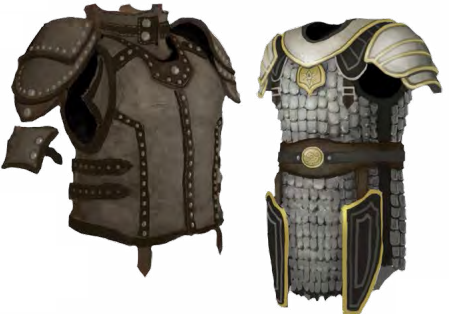
Armor is pretty simple in SotDL, but it works a little differently than you might expect. You of course have penalties to certain things like swimming and climbing and you’re slower while wearing heavier armor. Armor also has required Strength scores to use it, and if you don’t meet that, you take a penalty to Speed and make all Strength and Agility challenge and attack rolls with 1 bane. When wearing armor, the Defense of the armor is not a bonus to you existing Defense unless it says exactly that. Instead, and this is true for all armor heavier than light armor, you replace your Defense with that of the armor.
I like how this works because it makes sense that you don’t get the benefit of your speediness while wearing armor. The armor acts like armor is supposed to: it absorbs blows that would otherwise hit you. Let’s get into the armor and what it gives you
- Clothing - no bonus to Defense, costs little and is available everywhere.
- Soft Leather - +1 to Defense and it costs 2ss, also available anywhere.
- Hard Leather - +2 to Defense, costs 5ss and common availability.
- Brigandine - 13 Defense, 5ss cost and again common.
- Mail - 15 Defense, 1 gc cost and uncommon availability.
- Scale - 16 Defense, costs 2gc and is uncommonly available.
- Plate and Mail - 17 Defense, costs 5gc and is rare.
- Full Plate - 18 Defense, 25gc cost and is exotic.
Weapons
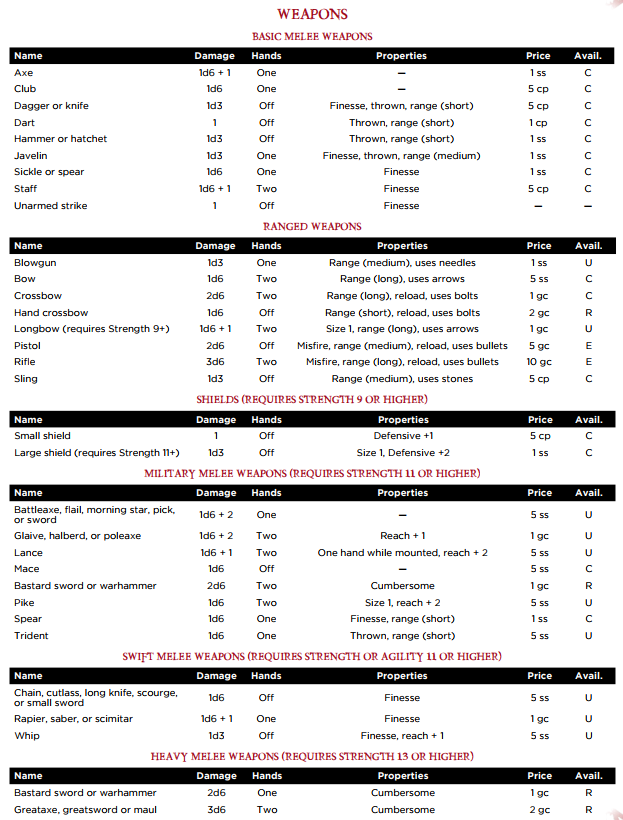
If you were expecting a chart of weapons like good old D&D, well you’re going to get exactly that. SotDL doesn’t exactly do anything new with weapons. You’ve got the types you’re accustomed to: melee, ranged, simple, military, heavy etc. Some of them have Strength requirements and give you 1 bane if you don’t meet it. Some weapons are two-handed, others are one, and a few are “off”, which means you can wield them in your off-hand.
Some weapons have special properties. Big weapons are generally Cumbersome, giving you a bane to all attacks with them, some are Finesse, which means you can attack with either Strength or Agility when using them, others, like the guns and crossbows, need to be reloaded after every shot. Guns in SotDL also have the Misfire property, meaning that when you attack with it, if you get a 0 or less, the gun has a chance of being just jammed or it can explode in your hand. Defensive is a property applied to shields, giving you a bonus to Defense.
All weapons in SotDL deal either 1 damage, 1d3 or a number of d6s and possibly a little extra. The most common amount of damage is 1d6. Your standard spear does 1d6, and a sword/axe does 1d6 + 1. Guns are particularly powerful, with pistols dealing 2d6 and rifles doing 3d6. The damage for weapons tops out an an innate 3d6 for the rifle and the great weapons, which require a Strength of 13 to use. More damage comes from specific talents. I’ve seen damage as high as an 8d6 with a great weapon and it can get up to 10d6. Fighters in SotDL are the damage kings, as spells generally don’t do that much damage, and a ton of monsters take half damage from spells. A few take half damage from weapons, but generally speaking the guy with the weapon is going to be doing the most damage.
You can either track ammo manually or use the abstract system: if you roll a 0 or lower on your ranged attack, you are out of ammo and can’t use the weapon until you recover more.
Adventuring Gear
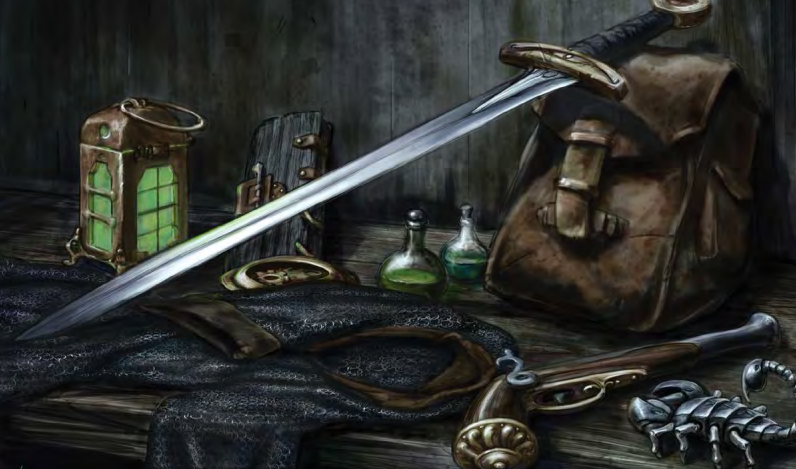
This is your standard list of stuff an adventurer might need. Your universal adventurer’s kit has the classics: backpack, bedroll, cutlery (actually, huh?), tinderbox, torches, 20 yards of robe, a grapnel, a week of rations and a waterskin. Most of that is pretty familiar. You’ve then got your sources of illumination, from matches up to spotlight lanterns.
After that is a wide variety of stuff. Things like a crowbar, which gives 1 boon on Strength challenge rolls to open closed things or an implement of magic for casting your spells for most Traditions. There are knuckledusters, listed here and not under weapons because they act as an enhancement for your unarmed strikes, adding a whopping 1 damage to them! Enjoy punching goatmen to death 2 damage at a time. Nets are listed here, and they do what you think they would do, while there are also torturer’s tools.
The torturer’s tools are a problem for me. They allow you to spend time torturing a creature (though the game never says this directly. This description is all mechanics), you can deal damage to the creature after attacking their Will with yours. So essentially tortture is a contest of personalities that can hurt the tortured target. At the end of this, if you succeed, you can ask the target a question that they must answer truthfully, or make up something if they don’t know. As a person who is anti-torture and knows the evidence backs me up on that view, this tacit endorsement of torture as an effective tactic is really off-putting. But in the end, it serves to underline the kind of world SotDL takes place in: one where evil methods get results.
The chapter ends with the prices for common foods, drinks, services and the cost of various retainers, OD&D style. There are potions, among which are your standards like healing potions, resistance potions and antitoxins. But a few stand out to me.
- The fleeting youth potion lets you heal damage and appear to be in the prime of your life for a few days.
- The growth potion is a Hulk serum that increases your Size to 2 and gives you all the attendant bonuses to Health and damage.
- The seeing potion lets you see stuff in the dark.
And that’s it for the equipment chapter! It oscillates between good stuff like the abstract ammo tracking system to weird, fiddly crap like the carrying limits rules. Equipment in SotDL is meant to be simple and easy to get your head around and for the most part I think it accomplishes that. If you’re an old D&D player most of this is second nature, aside from how armor works. And for folks not inured to d20 stuff, it is easy enough to understand. The simplification of weapon damage in particular is nice, as it makes the math easier to get and cuts down on the number of dice you need (even if I do like all my pretty d8s and d10s).
That’s it for this Shadow of the Demon Lord update. Next time we’ll get started on covering the magic traditions!
An Introduction, Magic and Traditions A-B
Original SA post Shadow of the Demon Lord Part 15: An Introduction, Magic and Traditions A-BThe previous F&F of SotDL was abandoned, but I believe that SotDL is good enough that it warrants a continuation from where Serf, who I would like to thank for the effort I am building off of, left off. Please excuse me if I am not as comprehensive as Serf was.
Magic: How Learn?
Compared to spellcasters in D&D, the ones in SotDL are much more focused and have fewer distinct spells at hand. I order to learn a spell, you need to have discovered the tradition that the spell belongs to and have Power equal to the spell's rank (i.e. level, thanks Schwalb et al. for making the terminology clearer). A minor rule that some have mentioned not noticing is that, upon discovering a tradition, you learn one of its rank 0 spells. Learning a spell also allows you to exchange another learned spell for one of the same rank or lower, so you're not stuck with a spell that's no longer useful. Some traditions (viz. Curse, Forbidden, and Necromancy) are "dark magic", granting a point of Corruption for discovering them and possibly for learning their spells, in exchange for the useful benefit of a boon to challenge rolls to resist gaining Insanity for every dark magic spell learned.
Magic: How Do?
To cast a learned spell one needs four things: speaking some magic words, wielding an implement (which requires an hour spent attuning and you can only have one at a time) using an action, and expending a casting. The number of castings each individual spell gets depends on the spell's rank and your Power, and all castings are recovered after a rest and a minute of ritual. SotDL divides spells into attack and utility, and nerfs spellcasters compared to D&D by requiring attack rolls for most attack spells, with the attribute modifier being either Intellect or Will, depending on tradition. I won't go into detail on the nitty-gritty of spell descriptions and targeting rules except to note that unless spell text specifies otherwise, a spell can only be cast on an object that the caster wears or carries, or an unattended object, so no using fetch (a 0 rank Teleportation spell) as an irresistible disarm. Some spells also can have "critical hit" effects on an attack roll of 20 or more that beats the resisting attribute or characteristic by 5.
Air Tradition
Guess what this tradition controls. Stir the Air creates a breeze in a two-yard radius of the caster that protects them from ranged and thrown weapon attacks...made in the area. I would probably rule the bane as applying to every ranged or thrown attack passing through the area. Wind Blast is an attack spell that moves the target 1d6 yards away from the caster, and Evoke Gale is a 3-yard cone version of it. Flense flenses the target with windborne grit. Glide is feather fall. Still the Air deafens all creatures in a 4-yard radius and makes them immune to sound-based attacks, like Thunderclap, a spherical area-of-effect that deafens and damages. Bestow Flight is fly. Fling and Create Cyclone are a cylinder and a line that damage and throw targets around. The rank 5 capstone, Bind Wind Genie, summons what other games would call an air elemental.
Alteration Tradition
This tradition, all utility spells with reach range, provides beneficial transformations to targets. Comprehension allows you to communicate with any one creature, as long as it knows at least one language and you touch it. It’s not mentioned if the communication is verbal or not. Distort Appearance is kind of like blur. It gives a boon to the targets attempts to hide and a bane to attacks against its Defence or Agility. Enhanced Senses gives the target shadowsight at the cost of vulnerability to blinding and deafening. D&D players will recognize Spider Climb. Underwater Adaptation lets the target breathe water and swim much better. Bolster Attribute a grants a boon to rolls with a particular attribute. Bolster Defence grants +5 Health and a bane to attack rolls against the target. Alter Size allows you to double or halve the target’s size, with various bonuses and penalties, and can be used offensively to damage in a confined space. Regeneration lets a target heal damage at the end of every round for a minute (i.e. six rounds). Malleability turns the target rubbery, giving them some immunities and allowing them to slither through small openings. The capstone, Awaken Potential, gives a +1d6 bonus to a particular attribute.
Arcana Tradition
The Arcana tradition has a some attack and utility spells you’ll probably recognize from D&D. Arcane Armour is a combo of mage armour and endure elements. Magic Dart is a rare auto-hitting attack spell that does a little damage. Arcane Shield protects against attacks on Defence or Agility, and gives better protection against a single attack when cast as a triggered action. Arcane Sight is a better version of the magician’s sense magic, functioning within visual range. Unerring Darts gives you seven damage to divide among up to three targets. Empowered Magic is a self-buff that increases the potency of your attack spells. Explosive Darts is kind of like a much less damaging meteor swarm. Arcane Lightning is a cone-shaped AoE. Destroy Magic is an AoE dispel magic. Harness Magic gives you points that last until your next rest that can be consumed to cast spells without using castings. Arcane Retribution, the capstone, gives you a Defence bonus. The spell turns the next successful weapon attack against you into a failure, ending the spell and giving the attacker a bunch of damage and knockback.
Battle Tradition
This tradition’s spells are all about enhancing one’s combat prowess and attacks. Some of them involve making a weapon attack as part of casting the spell with the possibility of using Intellect instead of Strength or Agility. Oddly, the tradition’s attribute is Intellect, not Will. Discovering the tradition has a drawback: instead of rolling of the Madness table upon going mad, you start attacking the nearest creature. Augmented Attack boosts the attack roll made as part of it. This Celerity fortunately only involves moving without vulnerability to free attacks and can be used as a triggered action. Close Wounds heals you and can also be used as a triggered action. Mighty Attack boosts an attack roll and its damage. Resounding Attack is like mighty attack but with dazing instead of a damage boost. Arc of Death lets you deal some damage to every creature you can reach. Mountain Fall lets you jump a fair distance and causes an AoE where you fall. Battle Prowess gives you D&D 5e advantage (i.e. lets you roll the d20 twice and take the better result) on your weapon attack and boosts their damage for its duration. Meteoric Assault lets you move in a line, attacking each creature in reach with decreasing accuracy but increasing damage. Wall of Swords creates a line of slashing blades. The capstone, Strike like Lightning, allows you to attack every target you choose in a very damaging AoE.
